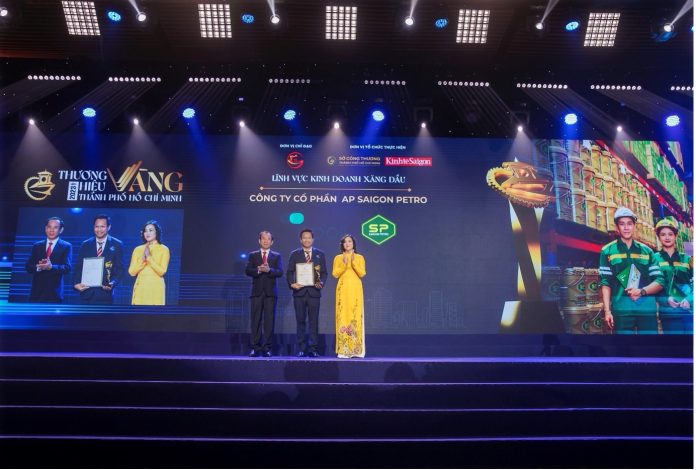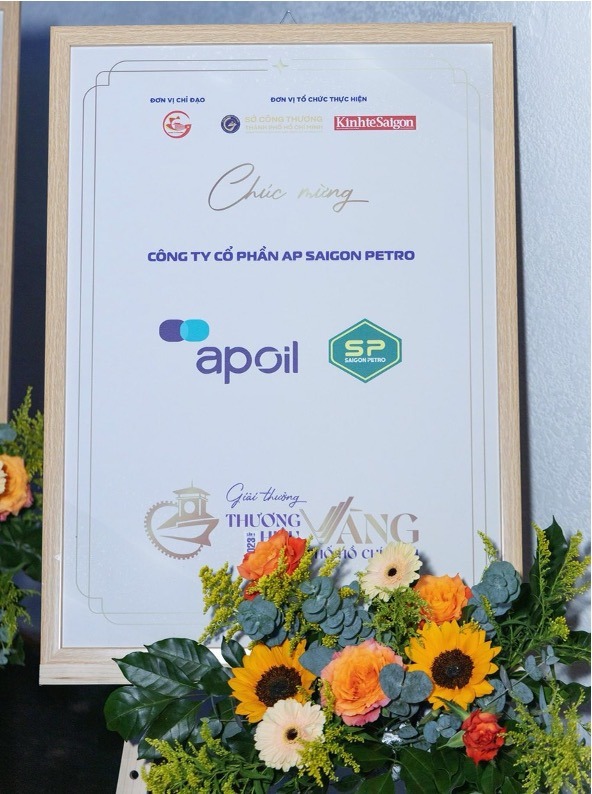Ban biên tập Chuyên trang Quản lý Môi trường, Tạp chí Môi trường và Đô thị Việt Nam trân trọng giới thiệu tới quý độc giả Công bố quốc tế lĩnh vực môi trường số 03-2024.
Về quản lý môi trường
– Xem xét tác động của các quy định môi trường sạch đến hệ số công suất tải để đạt được tính bền vững: Bằng chứng từ các nền kinh tế APEC.
– Khung dựa trên khả năng phục hồi để đánh giá khả năng chịu đựng của tài nguyên nước và môi trường dưới tác động của biến đổi khí hậu.
– Phấn đấu đạt được mức trung hòa carbon và thịnh vượng kinh tế ở 10 quốc gia phát thải hàng đầu: Kiểm định giả thuyết đường cong Kuznets hình chữ N.
– Tác động không đồng nhất của nền kinh tế kỹ thuật số đối với việc giảm phát thải carbon.
– Mở đường cho tương lai: Lập bản đồ các mô hình lịch sử và xu hướng tương lai của trữ lượng vật liệu đường bộ ở Nhật Bản.
– Theo dõi lượng khí thải carbon và cường độ trong các hoạt động quan hệ của chuỗi giá trị toàn cầu.
– Mô hình hóa dựa trên dữ liệu về lượng phát thải oxit nitơ trong đất hàng năm trên toàn cầu: Mô hình và thuộc tính không gian.
– Dự đoán kịch bản phát thải carbon đô thị và chiến lược tối ưu hóa sử dụng đất đa mục tiêu trong điều kiện hạn chế phát thải carbon.
– Ảnh hưởng của việc xử lý kết hợp nước thải đô thị và nước rỉ rác từ bãi rác đến sự lây lan của tình trạng kháng kháng sinh trong môi trường – Một nghiên cứu trường hợp sơ bộ.
Về môi trường đô thị
– Ảnh hưởng của nhiệt độ đến quá trình nitrat hóa của nấm trong quá trình sục khí tại chỗ mô phỏng tại bãi chôn lấp chất thải rắn đô thị lâu năm.
– Đặc điểm các nguồn khí dung hữu cơ PM10 xung quanh ở thành thị và nông thôn Catalonia, Tây Ban Nha.
– Đánh giá mức độ biến đổi của PM2.5 và tác động của nó tới sức khỏe con người tại một quốc gia Tây Phi.
– Số phận của vi hạt nhựa từ nước thải đô thị ở vùng đất ngập nước xử lý dòng chảy bề mặt.
– Chế độ ăn uống, lối sống và chất gây ô nhiễm ở ba đô thị phía đông Greenland của người Inuit.
– Hiệu quả của cơ sở hạ tầng xanh trong việc giảm tiếp xúc với các nguồn vật chất hạt trong không khí (PM) tại địa phương, liên quan đến giao thông.
– Đánh giá khả năng ứng phó và thích ứng của hệ thống thoát nước mưa đô thị với lượng mưa thay đổi theo dự báo CMIP6.
– Tác dụng trung gian ngắn hạn của PM2.5 đối với mức độ nghiêm trọng của COPD liên quan đến khí hậu.
– Đặc tính phân tử của chất hữu cơ hòa tan trong ao nước mưa đô thị và nước thải đô thị được biến đổi bởi dinoflagellate thủy triều đỏ Florida Karenia brevis.
Về môi trường khu công nghiệp
– Động thái nồng độ sinh học kim loại/kim loại trong cá và nguy cơ đối với sức khỏe con người do nước bị ô nhiễm bởi các hạt vật chất trong khí quyển từ khu công nghiệp luyện kim.
– Dấu chân carbon của một nhà máy xử lý nước thải thông thường: Phân tích mối quan hệ giữa nước-năng lượng từ góc độ vòng đời để giảm phát thải.
– Giải mã giá trị tiềm ẩn của các sản phẩm phụ công nghiệp: Tối ưu hóa quá trình lọc sinh học để tách kim loại từ bụi luyện thép oxy cơ bản và goethite.
– Xu hướng và thực tiễn hiện nay của các hệ thống lai dựa trên đông tụ để xử lý nước thải nhà máy giấy và bột giấy: cơ chế, kỹ thuật tối ưu hóa và đánh giá hiệu suất.
– Quy trình oxy hóa nâng cao trong xử lý nước thải công nghiệp: Đánh giá về chiến lược, cơ chế, điểm nghẽn và triển vọng.
– Quản lý nguồn nhân lực xanh trong bối cảnh bền vững của tổ chức: Chương trình nghiên cứu và đánh giá có hệ thống.
– Giải phóng tiềm năng xúc tác quang tiếp xúc với ánh sáng nhìn thấy của vật liệu nano V2O5/g-C3N4 cho sản xuất chất tẩy rửa nước thải công nghiệp nhuộm.
– Sản xuất tích hợp hydro và metan trong nhà máy lọc sinh học sữa bằng phương pháp phân hủy kỵ khí: Phân tích quy mô, kinh tế và rủi ro.
– Tác động của việc phân bổ hạn ngạch carbon đối với việc tái chế thiết bị của các nhà sản xuất định hướng dịch vụ: Thiết kế cơ chế phối hợp.
– Khung toàn diện để đánh giá tác động môi trường sinh thái của các nhà máy xử lý nước thải: Tích hợp lượng khí thải carbon, dấu chân năng lượng, độc tính và đánh giá kinh tế.
Xin trân trọng giới thiệu!
The Environmental Management Special Section is pleased to present to our valued readers the International Environmental Bulletin No. 03-2023, featuring the following key topics:
ENVIRONMENTAL MANAGEMENT / QUẢN LÝ MÔI TRƯỜNG
1. Insights into greenhouse gas emissions from a wastewater treatment plant in vulnerable water areas of China
Science of The Total Environment, Volume 902, 1 December 2023, 166017
Abstract
Wastewater treatment plants (WWTPs) are a significant anthropogenic source of greenhouse gas (GHG), but the quantitative assessment of GHG emissions from WWTPs in vulnerable water areas under stricter discharge limits remains unclear. Herein, depending on a case WWTP in southern China, we investigated the impacts of discharge standard improvement and key drivers of GHG emissions using daily operating data. We demonstrated that the stricter discharge limits increased the total GHG emission intensity by 18.2 %, with direct emissions increasing more than indirect GHG emissions. The GHG emissions were negatively correlated with water quantity, showing the scale effect, which became more pronounced after the discharge standard improvement. Increasing influent chemical oxygen demand and total nitrogen concentrations significantly drove the variations in GHG emissions, which were accelerated under stricter discharge limits. This study provides insights into the evaluation of GHG emission from WWTPs in vulnerable water areas and carbon-neutral wastewater management policies.
2. Examining the impact of clean environmental regulations on load capacity factor to achieve sustainability: Evidence from APEC economies
Journal of Cleaner Production, Volume 429, 1 December 2023, 139563
Abstract
Environmental regulations have emerged as a critical policy tool for promoting environmental sustainability worldwide. However, there is a dearth of literature that investigates the impact of environmental regulations on load capacity factor in Asia-Pacific Economic Cooperation (APEC) economies. This study aims to address this gap by examining the role of renewable energy consumption, human capital, and environmental regulations in improving load capacity factor. In doing so, the paper covers 14 APEC economies; applies second generations panel data models (i.e., CUP-FM (continuously updated fully modified) as the base model and CUP-BC (continuously-updated and bias-corrected) for the robustness); and runs data between 1992 and 2018. The empirical findings present that: i) renewable energy consumption and human capital contribute to improving load capacity factor; ii) environmental regulations are not at a level to increase load capacity factor; iii) economic growth and trade openness significantly reduce load capacity factor. Considering empirical outcomes, this study suggests that APEC should tighten environmental regulations to achieve sustainable environment. In addition, this study offers important sustainable environmental policies for APEC within the framework of empirical findings.
3. A resilience-based framework for evaluating the carrying capacity of water and environmental resources under the climate change
Science of The Total Environment, Volume 902, 1 December 2023, 165986
Abstract
This paper proposes a new framework for evaluating water and environmental resources carrying capacity (WERCC) based on the concept of resilience under uncertainty. First, several quantitative and qualitative criteria based on the seven principles of resilience and the Pressure-Support-State (PSS) framework are defined to incorporate the positive and negative impacts of human interventions and natural factors on water resources and the environment. The resilience principles include redundancy and diversity, managing connectivity, managing slow variables and their feedbacks, fostering complex adaptive system (CAS) thinking, encouraging learning, broadening participation, and promoting polycentric governance. After evaluating the values of the criteria and sub-criteria using a two-point evidential reasoning (TPER) approach and considering the existing uncertainties, the monthly time series of WERCC with uncertainty bands are calculated.
The proposed methodology is then used to evaluate the WERCC in the Zarrinehrud river basin in Iran for a given historical period (1991–2012), and the period of 2020 to 2049 under different climate change scenarios. The results of this analysis demonstrate the inadequacy of the WERCC during the historical period and indicate that the continuation of the existing trend (base scenario, MSC0) will cause many environmental issues. Hence, several water and environmental resources management (WERM) scenarios are proposed to enhance the WERCC. These scenarios are evaluated using a multi-agent-multi-criteria decision-making method to identify the preferable WERM scenario (MSC12356). This scenario, which encompasses various projects (e.g., development and enhancement of water transfer networks and upgrading cultivation methods), improves the average value of the WERCC by 26 %. The results of the proposed methodology are compared with those of a traditional decision-making method, which considers three criteria of average WERCC, the pressure-support index, and the implementation cost. The results demonstrate that the multi-agent-multi-criteria decision-making approach provides a more cost-effective management scenario, with 30 % less cost, leading to only 3 % less carrying capacity.
4. Striving for carbon neutrality and economic prosperity in the top ten emitting countries: Testing N shape Kuznets curve hypothesis
Journal of Cleaner Production, Volume 429, 1 December 2023, 139641
Abstract
Environmental deterioration brought on by the top ten greenhouse gas emitters is a critical worldwide issue with far-reaching ramifications for global economic sustainability. The main purpose of this research is to explore the link between economic growth, energy consumption, trade openness, and environmental factors with a focus on achieving carbon neutrality without compromising economic growth in the top ten emitting countries by employing a dynamic STIRPAT modeling technique. The data used in this research was taken from various sources, such as the International Energy Agency and the World Bank. The research found a robust association between energy consumption and economic growth, with a correlation coefficient of 0.87. The results revealed that carbon emissions () are positively related to per capita gross domestic product (PGDP), cubic GDP (), international tourism arrivals (Tour) and energy consumption (EC), while negatively related to trade openness (TO) and squared GDP () in the top ten emitting countries, confirming the N shaped Kuznets curve hypothesis. Trade liberalization also impacted emissions with a coefficient of 0.65 (p 0.01). The findings suggest that in order to simultaneously achieve carbon neutrality and continue economic development, it is imperative for the major polluting countries to embrace renewable energy sources and enact environmentally beneficial trade and economic measures.
5. Regional proximity effects of landscape pattern evolution: Evidence from 325 county-level areas in the middle reaches of the Yangtze River, China
Science of The Total Environment, Volume 903, 10 December 2023, 166134
Abstract
Unravelling the evolution of landscape patterns is essential to understand regional socio-ecological processes and to solve conflicts between environment protection and human development. However, the role of landscape transition in regional landscape pattern evolution remains unclear. Taking 325 county-level areas in the middle reaches of the Yangtze River (MRYR) as an example, this study explored the spatiotemporal associations between landscape quantity and pattern from the 1970s to 2020. Employing the methods of landscape metrics and trend and correlation analysis, associations between landscape transition and landscape pattern were found. The main results were as follows: (1) From the 1970s to 2020, urban land nearly doubled from 0.93 to 1.89 million km2. Arable land and forest showed the largest quantity reductions of 0.88 million km2 and 0.28 million km2, respectively. Other landscapes showed both decreasing and increasing trends with a spatial overlap among counties. (2) Transition in landscape quantity drives the change in landscape patches, thus affecting the landscape pattern in counties.
The percentage of landscape area at the class level (CPLAND) showed relative changes in the quantities of landscape categories in each observation year, but their extreme outliers presented larger changes. (3) Diverse correlation coefficients in terms of magnitude and direction suggested that the transition from natural landscape to human-influenced landscape and the reverse processes occurred. Aggregation and diversity metrics showed spatial interaction with similar distances and the perimeter-area fractal dimension (PAFRAC) showed spatial autocorrelation at local scale. Optimal bandwidths among arable land, forest, and urban land (129.2 km) revealed direct spatial interactions and causal relationships, as did waters and unused land (66.7 km). The findings explained the evolution of landscape patterns and highlighted key areas where various landscape changes occurred, and can provide scientific support for policy-making in regional landscape transition governance.
6. Climatic impacts of wind power in the relatively stable and unstable atmosphere: A case study in China during the explosive growth from 2009 to 2018
Journal of Cleaner Production, Volume 429, 1 December 2023, 139569
Abstract
The interaction between wind farms and the atmosphere becomes non-negligible. Here, we established a dynamic wind power development scenario (2009–2018) in China and performed the simulations using a numerical weather prediction model to quantify the climatic impacts. The results show that the significant local and regional climatic impacts are closely related to atmospheric stability. In particular, for the unstable atmosphere in summer, the induced vertical mixing breaks the inversion layer and promotes the variation of the high-level atmosphere with the evolution of mesoscale circulation, forming the regional climatic responses. A peak seasonal average wind speed deficit of 0.92 m/s and slight warming occur surrounding northern China, and a peak wind gain of 0.21 m/s and cooling of 0.52 °C emerge in southeastern China. It is expected that these impacts will be enlarged in the future, and it should be thought highly of the potential implications on sustainable wind development.
7. Regional climate change and possible causes over the Three Gorges Reservoir Area
Science of The Total Environment, Volume 903, 10 December 2023, 166263
Abstract
The Three Gorges Project, the largest hydroelectric project in the world, has attracted widespread attention regarding its impact on regional climate. However, existing studies on the climate effects of the Three Gorges Project construction are not sufficient due to limited data accumulation. In this study, we analyzed the annual and seasonal trend changes in temperature, precipitation, and humidity over the Three Gorges Reservoir Area (TGRA) based on long-term meteorological stations data, remote sensing data, and reanalysis products. Observation minus reanalysis method (OMR) was used to reveal possible impacts of land cover changes on climate changes.
Major results indicated that the TGRA experienced an overall warming trend for both annual and seasonal variations, with greater rising trends in the upstream. Except for autumn, the relative humidity of most regions mainly showed significant downward trends, indicating an overall drying trend in the TGRA. There was insignificant change in total precipitation and precipitable water vapor, with the largest variation observed during the summer. Although there were small differences among these datasets, their results of climate changes showed good consistency overall. In addition, the results of OMR indicated that land cover changes mainly had a warming and drying effect on the middle and upper reaches, and a cooling and moistening effect on the lower reaches of the TGRA. This may be due to the impact of land cover changes on the surface energy balance, thus affected temperature and humidity. The study has important reference value for understanding the climate changes in the TGRA and the climate effects brought about by large-scale engineering construction.
8. Heterogeneous effect of digital economy on carbon emission reduction
Journal of Cleaner Production, Volume 429, 1 December 2023, 139560
Abstract
The vigorous development of the digital economy (DIEC) offers a substantial potential for China and global economies to realize the goal of “double carbon”. This study attempts to analyze the heterogeneous effect of DIEC on carbon emission reduction (CERE), in order to extend a valuable reference for effectively achieving the dual-carbon goal. Accordingly, the effect of DIEC on carbon emission scale (CESC) and carbon emission intensity (CEIN) are examined in this paper by using dual fixed effect model and intermediate effect model, respectively. The study findings show that, at first, DIEC significantly supports the CERE while significantly constraining the uplift in CESC and CEIN.
Simultaneously, the CERE effect of DIEC contains digital economy dimensional heterogeneity, industry heterogeneity, production and life heterogeneity, and urban-rural heterogeneity. Finally, the DIEC boosts the technological innovation (TEIN) and residents’ income (REIN) levels, in order to heighten the CERE. Further, improving invention technology innovation and TEIN is more conducive to catalyzing the reduction of carbon emission in the whole society and the production field. Conversely, the improvement of non-invention technology innovation and rural- and urban residents’ income impedes CERE in the field of life. Thus, the implications of this study are of vital significance for China and the rest of the world to foster CERE and achieve the “dual carbon” goal through DIEC development.
9. Paving the way to the future: Mapping historical patterns and future trends of road material stock in Japan
Science of The Total Environment, Volume 903, 10 December 2023, 166632
Abstract
Roads are a fundamental component of societal infrastructure, whose decades-long lifespan has far-reaching implications for developmental decisions. The road construction and development have profound impacts on economic growth, social dynamics, and environmental sustainability. Therefore, comprehensive measurement of the current road material stock (MS) and the projection of expected future road scale based on regional socio-economic scenarios that can reflect unique local conditions are necessary. This study examined the historical changes and progression patterns of the road network across Japan from 1965 to 2020 through material flow and material stock analysis. By using the road MS time series, along with explanatory socioeconomic variables, several models including Autoregressive Integrated Moving Average with explanatory variables (ARIMAX), Support Vector Regression (SVR), hybrid ARIMAX-SVR, Multiple Linear Regression (MLR), Artificial Neural Networks (ANN), and Random Forest (RF) were compared. After comparison analysis, ARIMAX and hybrid ARIMAX-SVR models were employed to forecast expected road MS in each prefecture of Japan by 2050 based on national shared socioeconomic pathways (SSP) scenarios.
The study found that the total road MS of Japan increased 5.5-fold over 55 years. Aggregate was the dominant material, comprising over 70 % among the four materials of the total road MS. The forecast results for each prefecture were classified into three different patterns. Expected MS in most prefectures still displayed increasing trends in the five scenarios, but the projection of road MS in eight prefectures revealed a notable downward trend across each SSP scenario. For most prefectures, SSP5 displayed the highest expected road MS, followed by SSP1. SSP3 was the scenario with the lowest MS. This approach provided a more thorough understanding of the likely evolution of road MS across different SSP scenarios and could help inform decisions for resource allocation and policy formulation concerning road infrastructure management.
10. Tracing carbon emissions and intensity in relational global value chain activities
Journal of Cleaner Production, Volume 429, 1 December 2023, 139579
Abstract
Existing studies on emission accounting in global value chains (GVCs) have not focused on the relational nature of GVC activities manifested as the interaction of intermediate goods between enterprises. This paper proposes a relational GVC emissions accounting framework based on an inter-country input-output (ICIO) model distinguishing between domestic-owned enterprises (DOEs) and foreign-invested enterprises (FIEs), which is classified as trade-based, investment-based and hybrid-based emissions. Using AMNE-ICIO tables from 2005 to 2016, this paper traces emissions and carbon intensity in relational GVC activities at the global, economic, and industry levels. We find the following: (1) Investment-based emissions accounted for about 94.15% of the increase in relational GVC emissions, of which more than half comes from the interactive activities between DOEs and FIEs. (2) For the United States, high-income economies, and high-tech manufacturing, investment-based emissions were higher than trade-based emissions, and the reverse was true for upper-middle and lower-middle income economies and China. (3) Although relational GVC carbon intensity was high, the trend of decline was significant. (4) Compared to trade activities, investment-based activities were less carbon intensity in China and upper-middle income economies due to the interaction of production between FIEs and DOEs. The findings add new insights into the coordination of global emissions reductions and the allocation of emissions responsibility.
11. Data-driven modeling on the global annual soil nitrous oxide emissions: Spatial pattern and attributes
Science of The Total Environment, Volume 903, 10 December 2023, 166472
Abstract
Previous assessments generated divergent estimates of global terrestrial soil nitrous oxide (N2O) emission and its spatial distributions, which did not match the observed data well. The objectives of this study were to generate a global map of terrestrial soil N2O emissions based on field observations (n = 5549) and quantify the contribution of different variables for predicting the global variation of N2O emissions. We provided spatially explicit maps of annual soil N2O emission rates across forest, grassland and cropland using the random forest approach. The global mean soil N2O emission rate in our data-driven model was 0.059 ± 0.006 g N m−2 year−1, which was lower than the estimates from previous model ensembles. Soil N2O emissions were higher in the northern than southern hemisphere.
The average annual soil N2O emission rate of cropland (0.094 ± 0.009 g N m−2 year−1) was higher than that of forest (0.039 ± 0.004 g N m−2 year−1) and grassland (0.045 ± 0.007 g N m−2 year−1). In addition, we found that soil nitrogen substrates dominated the changes in soil N2O emissions and the relative importance of nitrate, ammonium, and fertilizer in predicting soil N2O emissions was greater than that of mean annual temperature and precipitation. Our data-driven model results implied that previous process-based model may overestimate the global soil N2O emission rates due to limited validation data and incomplete assumptions on related-mechanisms. This study highlights the importance of global field observations in N2O emission estimation, which can provide an independent dataset to constrain previous process-based models for better prediction.
12. Urban carbon emission scenario prediction and multi-objective land use optimization strategy under carbon emission constraints
Journal of Cleaner Production, Volume 430, 10 December 2023, 139684
Abstract
With the serious challenge of persistently high carbon emissions in China, the construction of low-carbon cities is poised to become a trend in future development. However, there has been limited research quantitatively exploring carbon emission spatial targets and efficient algorithmic optimization in a systematic manner. To investigate regional carbon emission compliance and systematic optimization methods, this study takes Shanghai Pudong New Area in China as a case study. It integrates an improved Kaya identity model for forecasting, carbon emission intensity analysis, and an enhanced multi-objective genetic algorithm for land-use optimization. The study aims to predict and account for carbon emissions, compare them against carbon emission targets, analyze spatial influencing factors, and consider relevant policy constraints to simulate low-carbon land-use layouts. The findings reveal the following: (1) Through scenario forecasting and carbon emission accounting analysis, it is evident that Pudong New Area’s carbon emissions do not meet the target requirements.
There is potential for optimization in terms of the balance between residential and workplace spaces, land use mix, and ecological areas. (2) After applying the genetic algorithm optimization, the carbon emissions in the land-use layout plan are reduced by 11.2%–27.88 million tC compared to the original planning scheme. (3) In simulated scenarios, there are significant changes compared to planned land-use layouts, including a 49% increase in the balance between residential and workplace areas, a 20% increase in land use mix, and a 33.9% increase in per capita park green space.This systematic optimization approach effectively predicts carbon emissions, adjusts land-use layout, and achieves a reduction in carbon emissions. The conclusions provide valuable technical support for low-carbon land-use planning and offer insights for the low-carbon development of other cities.”
13. The influence of combined treatment of municipal wastewater and landfill leachate on the spread of antibiotic resistance in the environment – A preliminary case study
Journal of Environmental Management, Volume 347, 1 December 2023, 119053
Abstract
Environmentally-friendly management of landfill leachate (LL) poses a challenge, and LL is usually co-treated with municipal wastewater in wastewater treatment plants (WWTPs). The extent to which the co-treatment of LL and municipal wastewater influences the spread of antibiotic resistance (AR) in the environment has not been examined to date. Two WWTPs with similar wastewater composition and technology were studied. Landfill leachate was co-treated with wastewater in one of the studied WWTPs. Landfill leachate, untreated and treated wastewater from both WWTPs, and river water sampled upstream and downstream from the wastewater discharge point were analyzed.
Physicochemical parameters, microbial diversity, and antibiotic resistance genes (ARGs) abundance were investigated to determine the impact of LL co-treatment on chemical and microbiological contamination in the environment. Landfill leachate increased pollutant concentrations in untreated wastewater and river water. Cotreatment of LL and wastewater could affect the abundance and diversity of microbial communities and the interactions between microbial species. Co-treatment also decreased the stability of microbial co-occurrence networks in the examined samples. The mexF gene was identified as a potential marker of environmental pollution with LL. This is the first study to explore the impact of LL on the occurrence of AR determinants in wastewater and rivers receiving effluents.
14. Research on fiscal policies supporting green and low-carbon transition to promote energy conservation and emission reduction in cities: Empirical evidence from China
Journal of Cleaner Production, Volume 430, 10 December 2023, 139688
Abstract
Cities have emerged as critical and challenging places for promoting the green and low-carbon transformation of the economy and society in the context of the “dual carbon” targets. Meanwhile, fiscal policy is also an indispensable component of the public policy framework supporting the green and low-carbon transformation. This paper uses the pilot project of “Comprehensive Demonstration Cities for Energy Conservation and Emission Reduction Fiscal Policies” (“ECER-CD” policy) implemented in China since 2011 as a quasi-natural experiment. This research theoretically analyzes and empirically tests the energy conservation and emission reduction effects of fiscal policies supporting green and low-carbon transformation utilizing methodologies such as time-varying DID and multiple periods and multiple groups of DID. The study finds that the pilot cities effectively reverse the behavioural bias of local governments and promote energy conservation and emission reduction efforts.
This conclusion holds after undergoing robustness tests such as parallel trend analysis and heterogeneity treatment effects. The effectiveness of the pilot policy is attributed to the upgrade of industrial structure, improvement of energy efficiency, and the effects of green technology innovation. However, cities’ geographic location and resource dependency can interfere with the effective implementation of policies. This paper also further explores the environmental dividends and economic consequences of the policy and finds that the pilot cities have certain environmental dividends and do not significantly restrain economic and social development. This study broadens the research perspective on fiscal policies in energy conservation and emission reduction and clarifies the pathways through which fiscal policies promoting green, low-carbon transformation drive energy conservation and emission reduction in cities. Moreover, it also improves the use of the Difference-in-Differences method in evaluating policy effects in scenarios such as the overlapping implementation of pilot policies and policy withdrawal. Finally, this paper proposes policy recommendations to provide more empirical evidence for China to accelerate the green and low-carbon transformation of the economy and society.
15. Dynamics of green economic development in countries joining the belt and road initiative: Is it driven by green investment transformation?
Journal of Environmental Management, Volume 347, 1 December 2023, 118969
Abstract
Green investment transformation is the main interval difference of the Belt and Road Initiative, however, its actual effects are still uncertain. Finding out its utility, mechanism and improvement on green economy may accelerate green development. In this paper, Slack Based Measure model is used to obtain original results, Super-Efficiency model is used to sort effective decision-making units for stronger efficient frontier and Minimum Distance to Strong Efficient Frontier model is used to narrow gaps between non-effective ones and real situations.
Then Global Malmquist-Lunberger index makes results dynamisation. Samples of 51 countries joining the Belt and Road Initiative from 2008 to 2022 are used in above-mentioned models to portray green economic dynamics. Then utility, mechanism and improvement of green investment transformation on green economy are studied through econometric model. The findings show that (i) Green Belt and Road Initiative makes green economic development more stable. The standard deviation decreases by 96.53% and mean maintains in 1.5. However, disconnection between a 36.36% increase of pure technological change and a 24.83% decline of its scale effect inhibits technical advance. (ii) Share of countries obtaining green scale revenues reaches 56.86%, which realizes a 52.64% increase. Furthermore, gaps between countries with positive status and those with negative status narrow 68.42%. Positive group accounts for 50% in developed countries and 46.15% in developing countries. (iii) Performance of Green Belt and Road Initiative is better than the Belt and Road Initiative.
A one standard deviation increase in green investment transformation increases green economic development by 0.2705 (0.2105), which is a 18.57% (14.45%) increase relative to average green economic development of 1.457. Former’s strengths also reflect in different quantiles, lagging effect and heterogeneity analysis. (iv) Green investment transformation of Green Belt and Road Initiative broadens more reliable mechanism (Promote Innovation – Strict Regulation – Ensure Commercialization) based on original one (Improve Efficiency – Decrease Costs – Increase Revenues) of the Belt and Road Initiative. (v) For the green investment transformation with government subsidies, property rights protection, investment environment stability and exchange cooperation, magnitudes of its effects on green economic development have significant increases by 25.03%, 31.77%, 8.01% and 10.12% respectively. The findings not only help understand green economic status, but also support some policy insights for achieving green economy by discovering utility, mechanism and improvement of green investment transformation.
16. Climate resilience assessment of sustainability at national level: A case study of sub-Saharan Africa
Journal of Cleaner Production, Volume 430, 10 December 2023, 139717
Abstract
Climate change is the most critical challenge to achieve sustainability, disrupting national economies and human lives, especially in vulnerable countries. However, there has been limited research assessing the “climate resilience of sustainability” — the capacity of national sustainability to withstand and recover from the impacts of climate change — over time and space. To bridge this gap, we quantify the climate resilient performance of sustainability (including social, economic, and environmental sub-resilient performance and comprehensive performance) in 37 sub-Saharan African (SSA) countries.
We employed a coupling coordination degree model and panel regression to analyze the synergy between sub-dimensional resilience and explore the association between climate resilience of sustainability and other variables, respectively. Our findings indicate that while current development in most SSA countries lacks resilience, the score gap of climate resilience of sustainability between these countries is narrowing. On average, coastal countries exhibit lower performance in terms of the resilience of sustainability to climate change compared to inland countries. Moreover, the climate resilient performance among the three dimensions for all income groups reached an intermediate-coordinated state in 2018. However, most SSA countries exhibited an asymmetric level of sustainability and its climate resilience. Furthermore, we identified significant correlations between variables such as governance, gross domestic product, population, and precipitation with the climate resilience of sustainability. The insights from this study emphasize the need to prioritize climate resilience of sustainability and provide a reference for researchers and policymakers worldwide, to shape a long-term, prosperous, and resilient future under climate change.
URBAN ENVIRONMENT/ MÔI TRƯỜNG ĐÔ THỊ
1. High frequency measurement of carbon emissions based on power big data: A case study of Chinese Qinghai province
Science of The Total Environment, Volume 902, 1 December 2023, 166075
Abstract
In this paper, we build the electricity‑carbon model with techniques of frequency transformation, and statistical modeling. With macro statistical data released by Statistics Bureau of Qinghai Province and high-frequency power big data provided by State Grid Qinghai Electric Power Company, based on the electricity‑carbon model we apply the inventory method to measure the monthly carbon emissions of Qinghai Province and its prefectural-level cities, as well as its industry, construction, and other five industries. Additionally, we apply the same method to measure the emission reduction contribution of green power by using the data of proportion of “green power”. The results show that first there is a “double imbalanced” phenomenon for the distribution of Qinghai’s carbon emissions, which means that the distribution of carbon emissions of Qinghai’s prefectural-level cities is imbalanced and the distribution of carbon emissions of Qinghai’s industries is also imbalanced. Second, the emission reduction effect of “green power” is significant. And the quantity of its reduction accounts for 54 % of Qinghai’s total emission. Third, in comparison with the seven institutions’ relative error rate which is about 7 % for measuring China’s carbon emissions, our results are reliable.
2. Effect of temperature on fungal nitrification in simulated in-situ aeration of aged MSW landfill
Chemosphere, Volume 344, December 2023, 140286
Abstract
Fungal nitrification is one kind of heterotrophic nitrification that involves certain species of fungi promoting the transformation of organic nitrogen and ammonia nitrogen to nitrite/nitrate. In this study, simulated aerated landfill reactors (SALRs) were constructed to investigate fungal nitrification in aged municipal solid refuse, with a focus on understanding the effect of temperature on the performance of fungal nitrification as well as fungal contribution to ammonia nitrogen transformation.
Different nitrogen metabolism patterns have been observed in the system with fungi only (SALRF) and complete microbial consortium, i.e., bacteria + fungi (SALRC). At a temperature of 35 °C, autotrophic nitrification dominated the ammonia nitrogen transformation, while fungal nitrification did not significantly contribute to ammonia removal. However, at elevated temperatures (i.e., 45 °C and 55 °C), fungi played a crucial role in ammonia transformation through fungal assimilation and fungal nitrification, with bacterial function suppressed. Furthermore, 45 °C was found to be the optimal temperature for fungal nitrification, exhibiting the highest nitrification rate (13.98 mg L−1 d−1) which accounted for 49.80% of total nitrification rate in the aerated landfill. High throughput sequencing revealed reshaping of fungal community in response to temperature variation. The abundance of Aspergillus fumigatus, with a relative abundance ranging from 67.13% to 92.71% at elevated temperatures, suggested its significant potential for fungal nitrification. These findings have implications for the promotion of nitrogen cycle through strengthening fungal nitrification in aerated landfill sites which often operate at high temperatures.
3. Characterizing the sources of ambient PM10 organic aerosol in urban and rural Catalonia, Spain
Science of The Total Environment, Volume 902, 1 December 2023, 166440
Abstract
Organic aerosols (OA) have recently been shown to be the dominant contributor to the oxidative potential of airborne particulate matter in northeastern Spain. We collected PM10 filter samples every fourth day from January 2017 to March 2018 at two sampling stations located in Barcelona city and Montseny Natural Park, representing urban and rural areas, respectively. The chemical composition of PM10 was analyzed offline using a broad set of analytical instruments, including high-resolution time-of-flight mass spectrometry (HR-ToF-AMS), a total organic carbon analyzer (TCA), inductively coupled plasma atomic emission spectrometry (ICP-AES), inductively coupled plasma mass spectrometry (ICP-MS), ion chromatography (IC), and thermal-optical carbon analyzer.
Source apportionment analysis of the water-soluble organic content of the samples measured via HR-ToF-AMS revealed two primary and two secondary sources of OA, which included biomass-burning OA (BBOA), sulfur-containing OA (SCOA), as well as summer- and winter‑oxygenated OA (SOOA and WOOA). The presence of hydrocarbon-like water-insoluble OA was also identified based on concentration trends in black carbon and nitrogen oxides. The results from the source apportionment analysis of the inorganic composition were correlated with different OA factors to assess potential source contributors.
Barcelona showed significantly higher average water-soluble OA concentrations (5.63 ± 0.56 μg m-3) than Montseny (3.27 ± 0.37 μg m-3) over the sampling period. WOOA accounted for nearly 27 % of the averaged OA in Barcelona compared to only 7 % in Montseny. In contrast, SOOA had a greater contribution to OA in Montseny (47 %) than in Barcelona (24 %). SCOA and BBOA were responsible for 15–28 % of the OA at both sites. There were also seasonal variations in the relative contributions of different OA sources. Our overall results showed that local anthropogenic sources were primarily responsible for up to 70 % of ambient soluble OA in Barcelona, and regulating local-scale emissions could significantly improve air quality in urban Spain.
4. Assessment of variability in PM2.5 and its impact on human health in a West African country
Chemosphere, Volume 344, December 2023, 140357
Abstract
PM2.5 has become a global challenge threatening human health, climate, and the environment. PM2.5 is ranked as the most common cause of premature mortality and morbidity. Therefore, the current study endeavors to probe the spatiodynamic characteristics of PM2.5 in the Republic of Niger and its impacts on human health from 1998 to 2019. Based on remotely sensed satellite datasets, the study found that the concentration of PM2.5 continued to rise in Niger from 68.85 μg/m3 in 1998 to 70.47 μg/m3 in 2019. During the study period, the annual average PM2.5 concentration is far above the WHO guidelines and the interim target-1 (35 μg/m3).
The overall annual growth rate of PM2.5 concentration in Niger is 0.02 μg/m3/year. The health risk (HR) due to PM2.5 exposure is also escalated in Niger, particularly, in Southern Niger. The extent of the extremely high-risk areas corresponding to 1 × 104–9.4 × 105 μg.persons/m3 is increased from 0.9% (2000) to 2.8% (2019). Niamey, southern Dakoro, Mayahi, Tessaoua, Mirriah, Magaria, Matameye, Aguié, Madarounfa, Groumdji, Madaoua, Bouza, Keita, eastern Tahoua, eastern Illéla, Bkomnni, southern Dogon-Doutchi, Gaya, eastern Boboye, central Kollo, and western Tillabéry are experienced high HR due to long-term exposure to PM2.5. These findings indicate that PM2.5 causes a serious health risk across Niger. There is an immediate need to carry out its regional control. Therefore, policymakers and the Nigerien government should make conscious efforts to identify the priority target areas with radically innovative appropriate mitigation interventions.
5. The fate of microplastics from municipal wastewater in a surface flow treatment wetland
Science of The Total Environment, Volume 903, 10 December 2023, 166334
Abstract
Microplastics (MPs) are an anthropogenic pollutant of emerging concern prominent in both raw and treated municipal wastewater as well as urban and agricultural run-off. There is a critical need for the mitigation of both point- and diffuse sources, with treatment wetlands a possible sustainable nature-based solution. In this study, the possible retention of MPs in treatment wetlands of the widely used surface flow (SF) type was investigated. In- and outflow water, as well as atmospheric deposition, at a full-scale reed-based SF wetland (operating as a polishing phase of municipal wastewater treatment) was analyzed for MPs in a size range of 25–1000 μm. FPA-based μFT-IR spectroscopic imaging was used in combination with automated data analysis software, allowing for an unbiased assessment of MP numbers, polymer types and size distribution.
Inflow water samples (secondary treated wastewater) contained 104 MPs m−3 and 56 MPs m−3 in sampling campaigns 1 and 2, respectively. Passage through the SF wetland increased the MP concentration in the water by 92 % during a rain intense period (campaign 1) and by 43 % during a low precipitation period (campaign 2). The MP particle numbers, size and polymer type distribution varied between the two sampling campaigns, making conclusions around the fate of specific types of MPs in SF wetlands difficult.
Atmospheric deposition was measured to be 590 MPs m−2 week−1 during the rain-intense period. Our findings point towards atmospheric deposited MPs as an important factor in the fate of MPs in SF wetlands, causing an increase of MP concentrations, and potentially explaining the variations observed in MP concentrations in wetland effluent and removal efficiency. Furthermore, atmospheric deposition might also be a reason for the considerable inter-study variation regarding MPs removal efficiency in SF wetlands found in the available literature.
6. Diet, lifestyle and contaminants in three east Greenland Inuit municipalities
Chemosphere, Volume 344, December 2023, 140368
Abstract
Persistent organic pollutants (POP) are environmental contaminants transported over long distances to the Arctic where they biomagnify in marine mammals subsistence hunted by Inuit and may therefore affect human health. Marine mammals in east Greenland are known to have the highest POP concentrations in the circumpolar Arctic area. Due to high intake of marine mammals, east Greenlandic Inuit likewise have the highest POP body burdens across the Arctic.
This cross-sectional study aims to investigate the levels of POP and metals in Inuit with a high intake of top predatory species including killer whales and polar bears. Study participants include 37 men and 21 women from Kulusuk, Tasiilaq and Ittoqqortoormiit during year 2013–2015. Lipophilic POP (11 organochlorine-pesticides, 14 polychlorinated-biphenyls (PCB), 10 polybrominated diphenyl ethers), polyunsaturated fatty acids (PFUA) and cotinine were determined in plasma. Fifteen perfluoroalkylated substances (PFAS) were measured in serum and urine and the renal clearance was estimated. Finally the concentration of 10 metals were measured in whole blood.
The median age was 38 years, Ittoqqortoormiit Inuit being the oldest. The smoking rate was around 70%, and Kulusuk participants had the lowest PFUA concentrations. Significant municipality differences were observed for lipophilic POP, serum PFAS, mercury, arsenic and selenium with highest concentrations in Ittoqqortoormiit Inuit. Males had higher blood concentrations of PFAS and lead. The estimated PFAS renal clearance and ratio of urine to serum were significantly higher for females, suggesting a sex difference in excretion via the kidney, maybe partly because men had higher serum PFAS concentrations. We observed that Inuit with intake of >200 g polar bear per week had significantly higher levels of PCB, PFAS, arsenic and selenium. In summary, the level of blood POP and heavy metals seems to relate to sex and the frequency intake of meat from marine mammals.
7. Efficacy of green infrastructure in reducing exposure to local, traffic-related sources of airborne particulate matter (PM)
Science of The Total Environment, Volume 903, 10 December 2023, 166598
Abstract
One aim of roadside green infrastructure (GI) is to mitigate exposure to local, traffic-generated pollutants. Here, we determine the efficacy of roadside GI in improving local air quality through the deposition and/or dispersion of airborne particulate matter (PM). PM was collected on both pumped air filters and on the leaves of a recently installed ‘tredge’ (trees managed as a head-high hedge) at an open road environment next to a primary school in Manchester, U.K. The magnetic properties of PM deposited on leaves and filters (size fractions PM10 and PM2.5) were deduced from hysteresis loops, first-order reversal curves (FORCs), and low-temperature remanence measurements.
These were complemented with electron microscopy to identify changes in magnetic PM concentration downwind of the tredge/GI. We show that the tredge is permeable to airflow using a simple CO2 tracer experiment; hence, it allows interception and subsequent deposition of PM on its leaves. Magnetic loadings per m3 of air from filters (PM10 saturation magnetisation, Ms, at 5 K) were reduced by 40 % behind the tredge and a further 63 % in the playground; a total reduction of 78 % compared to roadside air. For the PM2.5 fraction, the reduction in magnetic loading behind the tredge was remarkable (82 %), reflecting efficient diffusional capture of sub-5 nm Fe-oxide particles by the tredge. Some direct mixing of roadside and playground air occurs at the back of the playground, caused by air flow over, and/or through gaps in, the slowly-permeable tredge. The magnetic loading on tredge leaves increased over successive days, capturing ~23 % of local, traffic-derived PM10. Using a heuristic two-dimensional turbulent mixing model, we assess the limited dispersion of PM < 22.5 μm induced by eddies in the tredge wake. This study demonstrates that PM deposition on leaves reduces exposure significantly in this school playground setting; hence, providing a cost-effective mitigation strategy.
8. Evaluating the response and adaptation of urban stormwater systems to changed rainfall with the CMIP6 projections
Journal of Environmental Management, Volume 347, 1 December 2023, 119135
Abstract
Climate change is altering urban rainfall characteristics, leading to extreme urban stormwater and, particularly, more frequent flooding. Due to the uncertainty of climate change, the responses of urban drainage systems to climate change are becoming more complicated. This complexity makes it difficult for decision makers to assess whether urban infrastructure is sufficiently resilient to cope with flood risks. In this study, the Xiao Zhai area, a high-density urban area of China, was used as an example. A quantitative method for assessing these risks and the resilience of urban drainage systems to future urban stormwater was developed. First, based on the Coupled Model Intercomparison Project Phase 6 (CMIP6), the variation and uncertainty of future rainfall in the study area were analysed. A high-fidelity hydro-hydraulic model was developed to analyse the influence of climate change on future urban stormwater.
Finally, the relationship between urban flood risk and the resilience of urban drainage systems was evaluated. The results show that the temporal distribution of future rainfall from 2023 to 2100 is relatively uniform. However, the number of heavy rainfall events increases significantly during this period. The flood risk caused by future rainfall was one level higher than the historical flood risk. For example, the flood risk caused by future 5a rainfall is equal to the flood risk from historical 10a rainfall. The correlations between the spatial distributions of flood risk and resilience are 0.49–0.63. Urban drainage systems urgently need to be improved and refined in areas with flood risk and low resilience to become more resilient to climate change. Rational planning of grey-green rainwater facilities in flood risk and low resilience areas can improve the rainwater system’s resilience to 0.67–0.95 for climate change.
9. Short-term mediating effects of PM2.5 on climate-associated COPD severity
Science of The Total Environment, Volume 903, 10 December 2023, 166523
Abstract
The impact of short-term exposure to environmental factors such as temperature, relative humidity (RH), and fine particulate matter (PM2.5) on chronic obstructive pulmonary disease (COPD) remains unclear. The objective of this study is to investigate PM2.5 as a mediator in the relationship between short-term variations in RH and temperature and COPD severity. A cross-sectional study was conducted on 930 COPD patients in Taiwan from 2017 to 2022. Lung function, COPD Assessment Test (CAT) score, and modified Medical Research Council (mMRC) dyspnea scale were assessed. The mean and differences in 1-day, 7-day, and 30-day individual-level exposure to ambient RH, temperature, and PM2.5 were estimated.
The associations between these factors and clinical outcomes were analyzed using linear regression models and generalized additive mixed models, adjusting for age, sex, smoking, and body mass index. In the total season, increases in RH difference were associated with increases in forced expiratory volume in 1 s (FEV1) / forced vital capacity (FVC), while increases in temperature difference were associated with decreases in FEV1 and FEV1/FVC. Increases in PM2.5 mean were associated with declines in FEV1. In the cold season, increases in temperature mean were associated with decreases in CAT and mMRC scores, while increases in PM2.5 mean were associated with declines in FEV1, FVC, and FEV1/FVC. In the warm season, increases in temperature difference were associated with decreases in FEV1 and FEV1/FVC, while increases in RH difference and PM2.5 mean were associated with decreases in CAT score. PM2.5 fully mediated the associations of temperature mean with FEV1/FVC in the cold season. In conclusion, PM2.5 mediates the effects of temperature and RH on clinical outcomes. Monitoring patients during low RH, extreme temperature, and high PM2.5 levels is crucial.
10. Association of indoor solid fuel use and long-term exposure to ambient PM2.5 with sarcopenia in China: A nationwide cohort study
Chemosphere, Volume 344, December 2023, 140356
Abstract
Background
Little is known about the association between air pollution exposure and sarcopenia in Asia. We aimed to investigate the associations of indoor solid fuel use and long-term exposure to ambient fine particulate matter (PM2.5) with sarcopenia in China.
Methods
Using a nationally population-representative study, 12,723 participants aged at least 45 years across 125 cities from the China Health and Retirement Longitudinal Study were enrolled in 2011, and further 3110 participants were followed up until 2013. Sarcopenia status was classified according to the Asian Working Group for Sarcopenia 2019 criteria. Household fuel types used for heating and cooking were assessed using a standard questionnaire. Ambient annual PM2.5 was estimated using satellite-based spatiotemporal models. Multinomial logistic regression as well as the multiplicative interaction and additive interaction analysis were used to explore the associations of indoor solid fuel and ambient PM2.5 with different status of sarcopenia.
Results
Of the 12,723 participants, 6071 (47.7%) were men. In the cross-sectional analyses, compared with clean fuel, using solid fuel for heating and cooking, separately or simultaneously, was significantly associated with a higher risk of both possible sarcopenia and sarcopenia. Each 10 μg/m3 increment of PM2.5 was positively related to possible sarcopenia (adjusted odds ratio, [aOR] 1.04, 1.02–1.07) and sarcopenia (1.06, 1.01–1.12). We found a significant interaction between solid fuel use for heating and ambient PM2.5 exposure with possible sarcopenia. During a two-year follow-up, solid fuel use was associated with incident possible sarcopenia (aOR 1.59, 1.17–2.15). These associations did not differ by sex and age, while participants living in a house with poor cleanliness might have a higher risk of sarcopenia.
Conclusions
Indoor solid fuel use and long-term exposure to ambient PM2.5 were associated with a higher risk of sarcopenia among Chinese adults. These findings provide implications for promoting healthy aging by reducing air pollution.
11. Molecular characterization of dissolved organic matter in urban stormwater pond and municipal wastewater discharges transformed by the Florida red tide dinoflagellate Karenia brevis
Science of The Total Environment, Volume 904, 15 December 2023, 166291
Abstract
Karenia brevis blooms occur almost annually in southwest Florida, imposing significant ecological and human health impacts. Currently, 13 nutrient sources have been identified supporting blooms, including nearshore anthropogenic inputs such as stormwater and wastewater outflows. A 21-day bioassay was performed, where K. brevis cultures were inoculated with water sourced from three stormwater ponds along an age gradient (14, 18, and 34 yrs.) and one municipal wastewater effluent sample, with the aim of identifying biomolecular classes and transformations of dissolved organic matter (DOM) compounds used by K. brevis.
All sample types supported K. brevis growth and showed compositional changes in their respective DOM pools. Fourier-transform ion cyclotron resonance mass spectrometry (FT-ICR MS) catalogued the molecular composition of DOM and identified specific compound classes that were biodegraded. Results showed that K. brevis utilized species across a wide range of compositions that correspond to amino sugars, humic, and lignin-like biomolecular classes. The municipal wastewater and the youngest stormwater pond (SWP 14) effluent contained the largest pools of labile DOM compounds which were bioavailable to K. brevis, which indicates younger stormwater pond effluents may be as ecologically important as wastewater effluents to blooms. Conversely, generation of DOM compounds of greater complexity and a wide range of aromaticity was observed with the older (SWP 18 and SWP 34) stormwater pond treatments. These data confirm the potential for stormwater ponds and/or wastewater to contribute nutrients which can potentially support K. brevis blooms, revealing the need for improved nutrient retention strategies to protect coastal waters from the potential ill effects of urban effluent.
12. Linking G2SFCA method and circuit theory to promote spatial equity and landscape connectivity in urban ecological infrastructure
Journal of Environmental Management, Volume 348, 15 December 2023, 119208
Abstract
Protecting and constructing urban ecological infrastructure (UEI) is an important spatial means of improving the quality of life of urban residents, enhancing the benefits of the urban environment, and improving urban habitats. Landscape connectivity is the basis for UEI to play an ecological role. Spatial equity is an important goal for UEI to enhance urban resident happiness and sense of access and achieve environmental justice. Taking Yantai city as an example, this study analyzed the UEI morphological spatial pattern based on morphological spatial pattern analysis and calculated the spatial accessibility of UEI based on the gravity -based two-step-floating catchment area (G2SFCA) method. In addition, the study proposed the concept of accessible UEI and reflected the spatial differences in the equity of accessible UEI in urban residential areas through equity modeling that was oriented to connectivity enhancement and equity improvement.
Moreover, the study integrated the location-allocation model and circuit theory to optimize the spatial layout of the existing UEI and construct an urban ecological corridor that considered landscape connectivity and leisure and recreational convenience. The results of this study showed that the proportion of bridge and island areas with connecting functions in the existing UEI in Yantai was only 10%, and they had not yet formed a complete network structure; hence, connectivity improvements were needed. In addition, the equity of accessible UEI in the residential areas of Yantai was generally good, and more than two-thirds of residents had sufficient access to UEI. However, approximately 32.7% of the residents in the four old city areas lacked a UEI distribution within their effective commuting time.
Moreover, UEI layout optimization could improve the equity of accessible UEI in residential areas; however, the method of adding a new UEI was not applicable to areas with high concentrations of urban populations and stable urban spatial layouts. Furthermore, urban ecological corridors could effectively improve the connectivity and equity of UEI; however, 70% relied on existing road systems and needed to enhance their ecological attributes. The UEI equity of residential areas was highly correlated with house prices, indicating an obvious spatial injustice in the UEI layout in Yantai. Planners and governments should promote urban environmental justice through effective conservation and construction measures by incorporating established ecological and artificial infrastructures into UEI planning to achieve equitable access to UEI services for urban residents. This study provides a spatial reference and methodological support to enhance the equity and connectivity of UEI.
13. A novel multi-strategy hydrological feature extraction (MHFE) method to improve urban waterlogging risk prediction, a case study of Fuzhou City in China
Science of The Total Environment, Volume 904, 15 December 2023, 165834
Abstract
Reliable hydrological data ensure the precision of the urban waterlogging simulation. To reduce the simulation error caused by insufficient basic data, a multi-strategy method (MHFE) for extracting hydrological features is proposed, which includes land use/land cover (LULC) extraction (LE) and digital elevation model (DEM) reconstruction (DR). First, the high-resolution remote image, satellite DEM, precipitation, flood points and depth, and planned LULC were collected. Second, the buildings, roads, and other areas of the satellite image were segmented using the U-Net model, and the LULC data with drainage features were extracted by combining the segmentation result with the planned LULC and drainage data.
Then, the terrain features of the road were enhanced to construct high-precision DEM based on the fusion of multi-source data, such as elevation points, LULC, and satellite DEM. Finally, the waterlogging model was implemented under different return periods of rainfalls and typhoon rainfall to obtain the waterlogging distribution and water depth. The simulation results were compared with historical waterlogging event data and water depth observations. The results indicated that the proposed method significantly improved the accuracy of the simulation. In terms of identifying the waterlogging points, the average F1 score increased by 0.36, 0.20, and 0.07 compared to the raw model and the single LE and DR methods, respectively. In terms of water depth simulation, the average Nash-Sutcliffe efficiency (NSE) was increased from −0.24 to 0.86, with DR and LE contributing to 79.1 % and 20.9 %, respectively. The principal contribution and novelty of this paper is to explore the generic method that enhance the hydrological data, and the findings of this study improved the performance of urban waterlogging simulation.
14. Divulging the dust: An examination of particle deposition on soft ocular lens during urban commuting
Chemosphere, Volume 344, December 2023, 140355
Abstract
Air pollution affecting the eye is a relatively new, emerging area of research that has implications for urban commuting and is the key first study. This article emphasizes the importance of understanding the effects of particle deposition on the human eye using soft lenses and their exposure, as well as identifying the chemical, elemental composition, and morphology of particles when commuting over a period of 21-day period. In this study, the focus is on personal sampling with soft contact lenses (42% Hioxifilcon A, 58% H2O) to understand particle deposition on ocular along with cascade to understand cut-off size.
Volunteers are used for five different modes, namely bus, open and closed car windows, pedestrian, and two-wheeler. The SEM results show that the morphology in buses, pedestrians and cars are denser, irregular, and nodular, with no or minimal interstitial pores, while the particles in two-wheelers appeared to be fibrous, thin, crystalline, and non-porous ranging from 51.2 nm to 406.3 nm. The ICPMS results show the higher concentration compositions for different commuter types, namely: zinc (0.0562 μg/m3 and 0.1076 μg/m3) for buses and pedestrians, potassium (1.5013 μg/m3) and calcium (2.5892 μg/m3), magnesium (2.978 μg/m3), potassium (4.197 μg/m3), calcium (22.335 μg/m3) and iron (7.526 μg/m3) for two-wheelers. The organic elemental composition from FTIR predominant groups namely carbonyl, carboxylic, OH, N–H, C–H, Cdouble bondC, Cdouble bondO, and C–O. The experiment concludes that travellers in two-wheelers and pedestrians are more susceptible to particle deposits which leads to several ocular effects such as eye-irritation, dryness, and visual impairment.
15. Analyzing the impacts of topographic factors and land cover characteristics on waterlogging events in urban functional zones
Science of The Total Environment, Volume 904, 15 December 2023, 166669
Abstract
Rapid urbanization and climate changes result in frequent occurrence of urban waterlogging disasters, which cause serious economic damage and pose a threat to residents’ safety. Understanding the spatial characteristic and the key influencing factors of urban waterlogging has significant implications for mitigating waterlogging. In this study, the officially issued representative waterlogging points were obtained, as well as the topographic factors and land cover characteristics were selected to compare their impacts on the waterlogging event density in a highly urbanized area at urban functional zone (UFZ) scale, and to quantify the contributions of the key influencing factors on urban waterlogging events.
Results showed the average density of urban waterlogging events in the study area is 9.2 points/km2, and 38.4 % of the waterlogging events are distributed in REZ. The distribution of waterlogging points in the study area revealed a significant multi-core and multilevel spatial aggregation pattern, and 12.1 % of the study area was high-density waterlogging area. In the total UFZs, the correlation coefficients of topographic indices with waterlogging density were relatively weaker than the other land cover characteristic metrics. The impervious surface ratio had significant contributions in all UFZ types. The larger ratio of impervious surface significantly increased the density of waterlogging events. The increase in the ratio of green space can effectively decrease the density of urban waterlogging. In the total UFZs, the top 3 key influencing factors of urban waterlogging were PR (35.9 %), COHESION (32.5 %) and DIVISION (11.8 %). The higher connectivity of landscape patches in REZ, INZ and COZ, as well as the increase of landscape dispersion or diversity in REZ, EGZ, INZ and GSZ can effectively reduce the occurrence of urban waterlogging. This study provides a better understanding of the formation mechanism of urban waterlogging disasters and potential implications for prioritized waterlogging mitigation strategies.
16. Optimization of green infrastructure networks in the perspectives of enhancing structural connectivity and multifunctionality in an urban megaregion
Journal of Environmental Management, Volume 348, 15 December 2023, 119084
1. Introduction
The intensified use of natural resources and the increasing degree of urbanization are changing the earth environment profoundly. Around 75% of the ice-free land surface has already been significantly altered and more than 85% of the area of wetlands has been lost (WWF, 2020). In the next three decades the world will continue to urbanize from 56% in 2021 to 68% in 2050 according to the World Cities Report (United Nations, 2022). Poorly planned and managed urbanization can cause irreversible damage to the ecosystem services that are not only critical to human wellbeing but also to biodiversity (Groot et al., 2022; Rosenfield et al., 2022; Torres et al., 2016). Against this background, green infrastructure (GI) strategy was proposed to integrate green spaces into large-scale infrastructure construction and spatial planning to ensure that basic ecosystem service needs are met. GI refers to natural and semi-natural green and blue space designed and managed to deliver a wide range of ecosystem services (European Environment Agency, 2014). Connectivity and multifunctionality are two important characteristics of GI (Rusche et al., 2019; J. Wang et al., 2022). An interconnected GI network can strengthen the integrity and resilience of regional ecosystems, and enhance the protection of biodiversity and various ecosystem services for human beings (Humphrey et al., 2015; Jongman et al., 2004).
The New Urban Agenda adopted by the Third United Nations Conference on Housing and Sustainable Urban Development calls for sustainable land use, adequate urban compactness and density to contain urban sprawl, and to promote and maintain well-connected and well-distributed GI (United Nations, 2017). The GI strategy has been recognized as one of the important tools to achieving high-quality and sustainable urban development, therefore, should be integrated in spatial planning (Isola et al., 2022; van Oorschot et al., 2021; J. Wang et al., 2022).
17. Water, sanitation, and hygiene implications of large-scale recycling of treated municipal wastewater in semi-arid regions
Science of The Total Environment, Volume 904, 15 December 2023, 166631
Abstract
Access to water, sanitation, and hygiene (WaSH) is crucial for national development, as it improves human health and fulfills a fundamental need. This study examines the impact of a large-scale groundwater (GW) recharge scheme using secondary treated wastewater (STW) on WaSH characteristics and identifies the major determinants of improved WaSH charecteristics in drought-hit regions of Kolar district, southern India. The study quantifies improved WaSH practices by comparing WaSH characteristics between impacted areas (influenced by STW) and non-impacted areas (not influenced by STW) of Kolar, using household survey data.
Pearson’s chi-square and student’s t-test are used to verify differences between WaSH characteristics. Furthermore, a composite WaSH score is formulated, and a hierarchical stepwise multiple linear regression model is constructed to identify major determinants of improved WaSH scores. The results show that impacted areas have better WaSH characteristics, including daily water supply by gram panchayat, enhanced toilet uses among all family members, bathing patterns, cloth washing practices, toilet cleaning patterns, and water consumption per capita per day. The maximum and minimum WaSH scores of impacted areas were 17.50 and 6.50, respectively, while those of non-impacted areas were 14 and 4.5. This study finds that improved water availability, quality, and security due to daily water supply at the household level are the major determinants of improved WaSH practices. These results can inform policymakers in designing sanitation and hygiene improvement policies that integrate water recycling projects in drought-hit areas.
INDUSTRIAL AREA ENVIRONMENT / MÔI TRƯỜNG KHU CÔNG NGHIỆP
1. Metal/metalloid bioconcentration dynamics in fish and the risk to human health due to water contamination with atmospheric particulate matter from a metallurgical industrial area
Science of The Total Environment, Volume 902, 1 December 2023, 166119
Abstract
Settleable atmospheric particulate matter (SeAPM) containing a mixture of metals, including metallic nanoparticles, has increased throughout the world, and caused environmental and biota contamination. The metal bioconcentration pattern in Nile tilapia (Oreochromis niloticus) was evaluated during a 30-day exposure to 1 g L−1 SeAPM and assessed the human health risk from consuming fish fillets (muscle) based on the estimated daily intake (EDI). SeAPM was collected surrounding an iron ore processing and steel industrial complex in Vitória city (Espírito Santo, Brazil) area. Water samples were collected daily for physicochemical analyses, and every 3 days for multi-elemental analyses. Metal bioconcentrations were determined in the viscera and fillet of fish every 3 days. The elements B, Al, V, Cr, Mn, Fe, Ni, Cu, Zn, As, Se, Rb, Sr, Ag, Cd, Pb, Hg, Ba, Bi, W, Ti, Zr, Y, La, Nb, and Ce were analyzed in SeAPM, water, and fish using inductively coupled plasma mass spectrometry. The metal concentration in SeAPM-contaminated water was higher than in control water. Most metals bioconcentrated preferentially in the fish viscera, except for the Hg and Rb, which bioconcentrated mostly in the fillet. The bioconcentration pattern was Fe > Al > Mn > Pb > V > La > Ce > Y > Ni > Se > As > W > Bi in the viscera; it was higher than the controls throughout the 30-day exposure. Ti, Zr, Nb, Rb, Cd, Hg, B, and Cr showed different bioconcentration patterns. The Zn, Cu, Sr, Sn, Ag, and Ta did not differ from controls. The differences in metal bioconcentration were attributed to diverse metal bioavailability in water and the dissimilar ways fish can cope with each metal, including inefficient excretion mechanisms. The EDI calculation indicated that the consumption of the studied fish is not safe for children, because the concentrations of As, La, Zr, and Hg exceed the World Health Organization’s acceptable daily intake for these elements.
2. Organic ultraviolet absorbents in soils and typical plants from an industrial metropolis in China: Concentrations, profiles and environmental implications
Chemosphere, Volume 343, December 2023, 140242
Abstract
There is accumulating evidence of the toxicity of organic ultraviolet absorbers (OUVAs); however, limited information is available regarding the presence of OUVAs in terrestrial environments and organisms. Therefore, this study was conducted to investigate the occurrence of 11 OUVAs in soils and typical plant species from an industrial metropolis in China. Total OUVA concentrations in soils ranged from 1.30 to 80.3 ng g−1 DW. Based on comparison with previously reported data, OUVA contamination in soil was not severe. Benzophenone and octocrylene were the dominant OUVAs in soils, with median contributions to total concentrations of 25% and 15%, respectively. Source assessment revealed that the observed OUVA contamination primarily originated from industrial activities and the use of personal care products. The concentration of 11 OUVAs in plants ranged from 159 to 4470 ng g−1 DW, at high levels. Our findings imply that great attention should be given to the presence of these chemicals in plants because of the risk they could pose as well as the potential for biomagnification as plants are eaten by insects and birds. Our results also indicate the necessity to further study the geochemical behavior of these chemicals in urban ecosystems in order to better manage the harmfulness to terrestrial ecological health caused by their exposure through the food chains.
3. Carbon footprint of a conventional wastewater treatment plant: An analysis of water-energy nexus from life cycle perspective for emission reduction
Journal of Cleaner Production, Volume 429, 1 December 2023, 139562
Abstract
Reducing greenhouse gas (GHG) emissions is of far-reaching implications for the sustainable development of a conventional domestic wastewater treatment plant (WWTP). GHG emissions of the WWTP in different working loads were monitored to quantify the influence of critical processes on GHG emissions and shed light on the relations between direct and indirect GHG emissions with the water-energy nexus. The life cycle carbon footprint of the WWTP was assessed to find the most critical impact factor. A conceptual model of direct and indirect GHG emissions was established based on the water-energy nexus and life cycle assessment (LCA). Results showed that direct GHG emissions were highest in medium working load in May.
While high indirect GHG emissions were in February, with the highest working load. Methane (CH4) emission rates, from 44.39 ± 42.49 to 4.94 ± 2.29 kg CO2e·d−1, decreased along the treatment processes due to oxidation. Dissolved CH4 in wastewater mainly came from the influent that was 0.08 ± 0.04 kg CH4·d−1. The increase of nitrous oxide (N2O) emissions and dissolved N2O occurred in the secondary treatment stage and was affected by the C/N ratio. The operation and maintenance phase had the most significant carbon footprint due to 86.4% of indirect GHG emissions from electricity usage through LCA. Electricity usage and glucose dosing were significantly correlated with N2O emissions but had no contribution to CH4 emissions. The conceptual model qualitatively demonstrated that direct and indirect GHG emissions reduced as electricity usage decreased based on the water-energy nexus. This study provided new insight into the analysis of GHG emissions from WWTPs.
4. Trend and current practices of coagulation-based hybrid systems for pulp and paper mill effluent treatment: mechanisms, optimization techniques and performance evaluation
Journal of Cleaner Production, Volume 429, 1 December 2023, 139543
Abstract
This paper presents an overview of pulp and paper mills (PPM) production processes, the resulting release of wastewater effluent loaded with wide range of pollutants and associated environmental impacts. The review highlighted the different types of functional materials and their modified forms employed as coagulants for pulp and paper mills industries effluent (PPME) treatment that have been intensively studied as a promising strategy for PPM to achieve cleaner and sustainable treatments in accordance with sustainable development goals (SDGs) “6-Clean water and sanitation”, “9-Industry, innovation, and infrastructure”, and “12-Responsible consumption and production”.
Standalone coagulation treatment processes are inherently ineffective towards meeting the increasingly stringent discharge requirements, coupled with their higher energy demand, and increased operational and maintenance costs. Owing to the recalcitrant nature of PPME contaminants, this review explored the effectiveness of the coagulation processes for decontamination of PPME. Furthermore, the review provides a state-of-the-art coagulation-based hybrid systems employed for enhanced PPME treatment. The process limitations, influencing factors and optimization techniques are highlighted. The review also highlights how sustained research in the subject area impacts on achieving cleaner production. The review also discusses coagulant classifications and the synergistic, antagonistic and shock load toxic effects of hybrid coagulants on toxicant biodegradation and their associated system efficiency. Moreover, it offers a guide for the development and application of sustainable hybrid-based coagulants for PPME treatment. The findings presented herein provide a vital theoretical foundation for sustainable solutions to improve coagulation-based hybrid systems efficiency and their scale-up towards potential commercialization.
5. Advanced oxidation process for the treatment of industrial wastewater: A review on strategies, mechanisms, bottlenecks and prospects
Chemosphere, Volume 345, December 2023, 140473
Abstract
Due to its complex and, often, highly contaminated nature, treating industrial wastewater poses a significant environmental problem. Many of the persistent pollutants found in industrial effluents cannot be effectively removed by conventional treatment procedures. Advanced Oxidation Processes (AOPs) have emerged as a promising solution, offering versatile and effective means of pollutant removal and mineralization. This comprehensive review explores the application of various AOP strategies in industrial wastewater treatment, focusing on their mechanisms and effectiveness. Ozonation (O3): Ozonation, leveraging ozone (O3), represents a well-established AOP for industrial waste water treatment. Ozone’s formidable oxidative potential enables the breakdown of a broad spectrum of organic and inorganic contaminants. This paper provides an in-depth examination of ozone reactions, practical applications, and considerations involved in implementing ozonation. UV/Hydrogen Peroxide (UV/H2O2): The combination of ultraviolet (UV) light and hydrogen peroxide (H2O2) has gained prominence as an AOP due to its ability to generate hydroxyl radicals (ȮH), highly efficient in pollutant degradation.
The review explores factors influencing the efficiency of UV/H2O2 processes, including H2O2 dosage and UV radiation intensity. Fenton and Photo-Fenton Processes: Fenton’s reagent and Photo-Fenton processes employ iron ions and hydrogen peroxide to generate hydroxyl radicals for pollutant oxidation. The paper delves into the mechanisms, catalyst selection, and the role of photoactivation in enhancing degradation rates within the context of industrial wastewater treatment. Electrochemical Advanced Oxidation Processes (EAOPs): EAOPs encompass a range of techniques, such as electro-Fenton and anodic oxidation, which employ electrode reactions to produce ȮH radicals. This review explores the electrochemical principles, electrode materials, and operational parameters critical for optimizing EAOPs in industrial wastewater treatment. TiO2 Photocatalysis (UV/TiO2): Titanium dioxide (TiO2) photocatalysis, driven by UV light, is examined for its potential in industrial wastewater treatment.
The review investigates TiO2 catalyst properties, reaction mechanisms, and the influence of parameters like catalyst loading and UV intensity on pollutant removal. Sonolysis (Ultrasonic Irradiation): High-frequency ultrasound-induced sonolysis represents a unique AOP, generating ȮH radicals during the formation and collapse of cavitation bubbles. This paper delves into the physics of cavitation, sonolytic reactions, and optimization strategies for industrial wastewater treatment. This review offers a critical assessment of the applicability, advantages, and limitations of these AOP strategies in addressing the diverse challenges posed by industrial wastewater. It emphasizes the importance of selecting AOPs tailored to the specific characteristics of industrial effluents and outlines potential directions for future research and practical implementation. The integrated use of these AOPs, when appropriately adapted, holds the potential to achieve sustainable and efficient treatment of industrial wastewater, contributing significantly to environmental preservation and regulatory compliance.
6. Green human resource management in the context of organizational sustainability: A systematic review and research agenda
Journal of Cleaner Production, Volume 430, 10 December 2023, 139713
1. Introduction
Sustainability is emerging as a pressing concern for businesses worldwide. Organizations employing sustainable practices are seen as strategic pivot points in the creation of a self-sustaining circular economy due to resource efficiency (Cheng et al., 2023). The United Nations (UN) underscores the necessity to confront global challenges to stimulate culturally resonant action among populations, thus preventing discord between societal, environmental, and economic dimensions. Consequently, in 2015, the UN established the 17 Sustainable Development Goals (SDGs) for nations at all stages of development to address pressing global issues (Toukabri and Mohamed Youssef, 2022).
Recognizing this sustainability imperative, it is incumbent upon organizations to cultivate a workforce that is proactive and responsive to sustainability issues (Karakhan et al., 2023). Such a talent pool can be procured through strategies including the recruitment of sustainability-conscious employees, evaluating potential hires’ commitment to societal, environmental, and human welfare (Saeed et al., 2018), offering training that elucidates the organization’s social and environmental pledges, and appraising and rewarding employee performance based on sustainability objectives (Gholami et al., 2016; Yong et al., 2019). Furthermore, Human Resource Management (HRM) practices are integral to infusing organizational policies and regulations with sustainability by promoting green behaviors among employees (Yong et al., 2019).
7. Unleashing the visible light-exposed photocatalytic potential of V2O5/g-C3N4 nanocomposites for dye industries wastewater cleaner production
Chemosphere, Volume 345, December 2023, 140452
Abstract
Dealing harmful dye-containing effluent from the textile sector significantly contributes to water contamination. The persistence of these dyes in wastewater complicates traditional treatment approaches, emphasizing the necessity for efficient photocatalytic materials for dye pollution degradation. Due to its unique features, V2O5/g-C3N4 nanocomposites are discovered as promising photocatalysts in this area. The V205 nanoparticles act as electron acceptors, while g-C3N4 acts as electron donors, thus encouraging charge separation and increasing photocatalytic activity. The V2O5/g-C3N4 nanocomposites are characterized using XRD, FTIR spectroscopy, SEM, TEM, XPS, and UV-DRS. Cationic dyes, anionic dyes and mix dyes (1:1 mixture of cationic and anionic dyes) are used to test the photocatalytic activity of the nanocomposites. Photocatalytic activity shows that V2O5/g-C3N4 nanocomposites are more active than their precursors. The V5G-2 nanocomposite degrades anionic (Rose Bengal (85.1%) and Xylenol Orange (77.6%), cationic (Auramine O (75% and Crystal Violet (79.5%), and mixed dyes (81%), after 120 min of irradiation. This study introduces a novel technique for synthesizing V2O5/g-C3N4 nanocomposites using solvothermal and ultrasonic processes. The findings of this research provide significant knowledge for the development of photocatalysts with enhanced efficiency in the degradation of dye pollutants.
8. Integrated production of hydrogen and methane in a dairy biorefinery using anaerobic digestion: Scale-up, economic and risk analyses
Journal of Environmental Management, Volume 348, 15 December 2023, 119215
Abstract
Anaerobic digestion has emerged as the most appealing waste management strategy in biorefineries. Particularly, recent studies have highlighted the energy advantages of waste co-digestion in industrial biorefineries and the use of two-stage systems. However, there are some concerns about moving the system from laboratory testing to industrial scale. One of them is the high level of investment that is required. Therefore, this study carried out a techno-economic analysis (scale-up and energy production, economic and risk analysis, and factorial design) to assess the feasibility of single- and two-stage systems in the treatment of cheese whey and glycerin for the production of hydrogen and methane.
Scenarios (S1 to S9) considered thermophilic and mesophilic single and two-stage systems with different applied organic loading rates (OLRA). The analyses of scale-up and energy production revealed that S3 (a thermophilic single-stage system operated at high OLRA 17.3 kg-COD.m−3.d−1) and S9 (a thermophilic-mesophilic two-stage system operated at high OLRA 134.8 kg-COD.m−3.d−1 and 20.5 kg-COD.m−3.d−1, respectively) were more compact and required lower initial investment compared to other scenarios. The risk analysis performed by a Monte Carlo simulation showed low investment risks (10 and 11%) for S3 and S9, respectively, being the electricity sales price, the key determining factor to define whether the project in the baseline scenario will result in profit or loss. Lastly, the factorial design revealed that while the net present value (NPV) is positively impacted by rising inflation and electricity sales price, it is negatively impacted by rising capitalization rate. Such assessments assist in making decisions regarding which system can be fully implemented, the best market circumstances for the investment, and how market changes may favorably or unfavorably affect the NPV and the internal rate of return (IRR).
9. Impact of carbon quota allocation on equipment recycling by service-oriented manufacturers: The design of a coordination mechanism
Journal of Cleaner Production, Volume 431, 15 December 2023, 139736
Abstract
Service-oriented manufacturing is an emerging approach in green manufacturing that involves recycling equipment by collecting, repairing, and returning it to the market after the lease period. This approach is cost-effective and environment-friendly, making it a popular choice among manufacturers. However, while various business models for service-oriented manufacturers have been investigated, less attention has been paid to optimal decisions and contracts to improve the efficiency of the service-oriented manufacturing supply chain under carbon quota allocation policies. For this reason, this study builds a game model, which consists of a service-oriented manufacturer and an operator in two cases, i.e., with or without carbon quota allocation. Our main findings are threefold. First, carbon quota allocation policies can raise the production costs entailed by operators, thereby increasing their threshold to voluntarily undertake equipment maintenance. Second, when the carbon trading price meets certain conditions, the operator’s profits increase with the price and are greater than those of the non-carbon-quota policy model. The change in carbon trading price has no direct effect on service-oriented manufacturers, but indirectly affecting their profits. In other words, these profits decrease with carbon trading price. Third, the revenue-sharing contract is more effective in minimizing equipment failures and more environment-friendly when the service-oriented manufacturer’s equipment failures are influenced by a range of factors.
10. A comprehensive framework for eco-environmental impact evaluation of wastewater treatment plants: Integrating carbon footprint, energy footprint, toxicity, and economic assessments
Journal of Environmental Management, Volume 348, 15 December 2023, 119255
Abstract
The need for clear and straightforward guidelines for carbon footprint (CFP) and energy footprint (EFP) evaluations is critical due to the non-transparent and misleading results that have been reported. This study aims to address this gap by integrating CFP, EFP, toxicity, and economic assessments to evaluate the eco-environmental impacts of wastewater treatment plants (WWTPs). The results indicate that the total CFP was below 0.6 kg CO2/kg COD removed, which is attributed to CO2 offset and biogas recovery. However, site-specific EFP varied considerably from 482.7 to 2294 kgCO2/kWh due to design differences of WWTPs and their aeration and mixing energy demand (46.96–66.1%). The use of crude oil and natural gas for electricity generation significantly increased EFP, CFP, and carcinogenic human toxicity. In contrast, a combined heat and power (CHP) installation enabled energy recovery ranging from 12.09% to 65.65%. Construction costs dominated the highest share of total costs (85.43%), with indirect construction costs (42.9%) and operation labor costs (61.4%) being the primary elements in the total net costs. It is worth noting that site-specific CO2 emission factors were used in the calculations to decrease model uncertainty. However, to improve modeling reliability, we recommend modifying the regional CO2 emission factor and focusing on emerging technologies to recover energy and biogas.
11. Does the local government multi-objective competition intensify the transfer of polluting industries in the Yangtze River Economic Belt?
Environmental Research, Available online 30 December 2023, 118074
Abstract
Exploring the effect of local government multi-objective competition on the transfer of polluting industries is of great practical significance for promoting the high-quality development in the Yangtze River Economic Belt. This paper adopted the extended shift-share analysis method to measure the scale of inter-provincial transfer of polluting industries in the Yangtze River Economic Belt from 2008 to 2020. Considering local governments’ economic, innovation, talent and environmental protection competition, the paper examined the effects of local government multi-objective competition on the transfer of polluting industries in the region, and tested its spatial spillover effects. The results showed that: 1. Different competitions had different effects on the transfer of polluting industries. Economic competition intensified the transfer of polluting industries, while talent, innovation, and environmental protection competition all restrained it, among which environmental protection competition had the strongest restraining effect. 2. Compared with the transfer of polluting industries, the direction of economic competition and environmental protection competition on the transfer of industries did not change, but the degree of influence was reduced, talent competition instead promoted industrial transfer of the research region to some extent. 3. From the basin level, government competition in the upstream region more obviously intensified the transfer of polluting industries; while from the economic scale level, the restraining effect of government competition in the developed region on the transfer of polluting industries was much stronger. 4. Both innovation and environmental protection competition had positive spatial spillover effects. Therefore, it is necessary to optimize the promotion and assessment mechanism of local officials, adopt differentiated competitive constraint mechanisms in accordance with local conditions, guide local governments to transform their development concepts, promote the sharing and common use of technological innovations, and promote the orderly transfer of industries in the Yangtze River Economic Belt.
12. Green credit policy and green innovation in green industries: Does climate policy uncertainty matter?
Finance Research Letters, Volume 58, Part C, December 2023, 104512
Abstract
We explore the influence of the green credit policy (GCP) on green enterprises’ green innovation behaviour and the moderating effect of climate policy uncertainty (CPU). We find that the GCP enhances strategic and substantive green innovation behaviour in green enterprises, and the promotion effect of the former is greater. Higher CPU positively moderates the relationship between the GCP and green innovation. The CPU perception weakens the green innovation effect of the GCP. Moreover, managerial myopia and government R&D subsidies have heterogeneous effects on the green innovation effect of the GCP in a context of increasing CPU and CPU perception.
13. Greening steel industry by hydrogen: Lessons learned for the developing world
International Journal of Hydrogen Energy, Volume 48, Issue 94, 5 December 2023, Pages 36623-36649
Abstract
Whole-of-economy greenhouse gas emissions reduction is one of the most important targets of transitioning to sustainable energy systems. With 7% of global emissions, the steel industry is one of the most carbon-intensive industries. Approximately two-thirds of annual steel production is attributed to the conventional blast furnace (BF)/converter route with high carbon emissions. Many countries in the world have developed large-scale laboratory pilots in line with steel production processes with green hydrogen or syngas. In this study, the experienced strategies of green, gray, and blue steel generation in the world are studied. Accordingly, the technology development approach of different countries, their targets, and implemented international motivations to improve the green-commodity supply chain are reviewed. The results show that in order to achieve low/zero carbon steel generation, the technology development approach in each country is consistent with its national circumstances, availability of resources, and constraints.
Therefore, concerning the economic and environmental approaches of the biocompatible technologies for the steel industry development, it is important to identify the countries’ strategies and plans for adapting the current industry based on local capacities and constraints. These considerations are analyzed for greening steel production in various regions of the world and recommendations are made for low-carbon steel production in developing countries. According to the findings of this research, it is advisable for nations that possess fossil fuel resources to adopt the production of blue steel, as the transition to green steel production entails a high cost of technology. Conversely, nations that have limited access to fossil fuels and abundant water resources can justify their policies on green steel production through the use of electrolysis technology and renewable energy. Additionally, some nations that have extensive agricultural land and biomass resources can benefit from the development of brown steel. Therefore, the strategy of low carbon steel is contingent on the geographical constraints and cannot be uniformly applied to all regions.
14. Green Leadership, environmental knowledge Sharing, and sustainable performance in manufacturing Industry: Application from upper echelon theory
Sustainable Energy Technologies and Assessments, Volume 60, December 2023, 103540
Abstract
The changing climate with new regulations, policy changes, consumer behaviour, technological shifts, and changes in business-as-usual places significant pressure on organizations to safeguard the ecosystem and strive for sustainable performance. Sustainability is essential for firms to effectively handle environmental challenges. As stakeholders become more environmentally conscious, firms are under greater pressure to implement green leadership and environmental knowledge sharing to enhance sustainable performance. In this context, this study examines the impact of green leadership on environmental knowledge sharing. Second, we examined the impact of environmental knowledge sharing on firms’ sustainable performance. In addition, we explore the mediating role of environmental knowledge sharing in the relationship between green leadership and firms’ sustainable performance, as supported by upper echelon theory.
To capture firms’ sustainable performance, we considered economic, social, and environmental dimensions. For hypotheses testing, we collected data from 257 respondents working in Pakistan’s manufacturing sector small and medium-sized firms, and analyzed the data using a structural equation model (SEM) with partial least squares (SmartPLS). The results reveal a positive and significant impact of green leadership on environmental knowledge sharing. This finding reveals that firms’ sustainable performance can be improved by adopting green leadership practices and by sharing environmental knowledge in the workplace. Importantly, our results show that environmental knowledge sharing significantly and positively mediates the relationship between green leadership and firms’ sustainable performance. This finding suggests that environmental knowledge sharing channels the impact of green leadership practices on firms’ sustainable performance. The current study’s findings and theoretical underpinnings shed new light on firms’ sustainable performance, shaped by green leadership practices and environmental knowledge sharing in the workplace.
15. Tracing carbon footprints to intermediate industries in the United Kingdom
Ecological Economics, Volume 214, December 2023, 107996
Abstract
Several decades of informed warnings about climate change have been insufficient to reverse trends of rising greenhouse gas (GHG) emissions and ecological degradation. The global supply chains are increasingly complex, which has impaired discussions about the responsibility, power and agency of various actors for socio-ecological transition. Historically, environmental impact assessments have focused on the origin and consumption ends of supply chains, overlooking the role of powerful intermediate actors. In this study, we present a detailed analysis of the industrial contributors to the carbon footprint of United Kingdom’s gross production using the multiregional input-output database EXIOBASE and product layer decomposition. We find that 54% of the GHG emissions associated with UK gross production in 2019 originate within four major source industries, including fossil fuel-based extraction, manufacturing and electricity, animal-based food, and air transport. Furthermore, the distribution of emissions and value added provides implications about mitigation capacity and spatial justice.
16. Decarbonizing the European energy system in the absence of Russian gas: Hydrogen uptake and carbon capture developments in the power, heat and industry sectors
Journal of Cleaner Production, Available online 30 December 2023, 140473
Abstract
Hydrogen and carbon capture and storage are pivotal to decarbonize the European energy system in a broad range of pathway scenarios. Yet, their timely uptake in different sectors and distribution across countries are affected by supply options of renewable and fossil energy sources. Here, we analyze the decarbonization of the European energy system towards 2060, covering the power, heat, and industry sectors, and the change in use of hydrogen and carbon capture and storage in these sectors upon Europe’s decoupling from Russian gas.
The results indicate that the use of gas is significantly reduced in the power sector, instead being replaced by coal with carbon capture and storage, and with a further expansion of renewable generators. Coal coupled with carbon capture and storage is also used in the steel sector as an intermediary step when Russian gas is neglected, before being fully decarbonized with hydrogen. Hydrogen production mostly relies on natural gas with carbon capture and storage until natural gas is scarce and costly at which time green hydrogen production increases sharply. The disruption of Russian gas imports has significant consequences on the decarbonization pathways for Europe, with local energy sources and carbon capture and storage becoming even more important. Given the highlighted importance of carbon capture and storage in reaching the climate targets, it is essential that policymakers ameliorate regulatory challenges related to these value chains.
17. Unlocking the hidden value of industrial by-products: Optimisation of bioleaching to extract metals from basic oxygen steelmaking dust and goethite
Chemosphere, Volume 343, December 2023, 140244
Abstract
In this study, the potential of bioleaching to extract valuable metals from industrial by-products, specifically basic oxygen steelmaking dust (BOS-D) and goethite was investigated. These materials are typically discarded due to their high zinc content and lack of efficient regeneration processes. By using Acidithiobacillus ferrooxidans, successful bioleaching of various metals, including heavy metals, critical metals, and rare earth elements was achieved. The Taguchi orthogonal array design was used to optimise the bioleaching process, considering four variables at three different levels. After 14 days, the highest metal extraction for the BOS-D (11.2 mg Zn/g, 3.2 mg Mn/g, 1.6 mg Al/g, 0.0013 mg Y/g, and 0.0026 mg Ce/g) was achieved at 1% solid concentration, 1% energy source concentration, 1% inoculum concentration, and pH 1.5. For goethite, the optimal conditions were 1% solid concentration, 4% energy source concentration, 10% inoculum concentration, and pH 2 resulting in a extraction of 26.6 mg Zn/g, 2.1 mg/g Mn, 1.8 mg Al/g, 0.01 mg Co/g, 0.0022 mg Y/g. These findings are significant, as they demonstrate the potential to extract valuable metals from previously discarded industrial by-products. The extraction of such metals can have substantial economic and environmental implications, while simultaneously reducing waste in the metallurgical industry. Furthermore, the preservation of initial concentration of iron in both BOS-D and goethite residues represents a significant step towards implementing more sustainable industrial practices.
CHUYÊN TRANG QUẢN LÝ MÔI TRƯỜNG
Tạp chí Môi trường và Đô thị Việt Nam
Ảnh: Các vấn đề liên quan đến khí thải carbon được các nhà khoa học đặc biệt quan tâm.
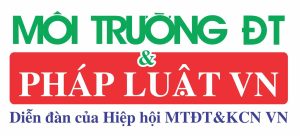
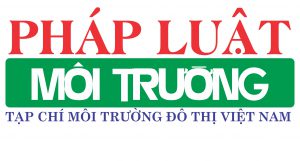
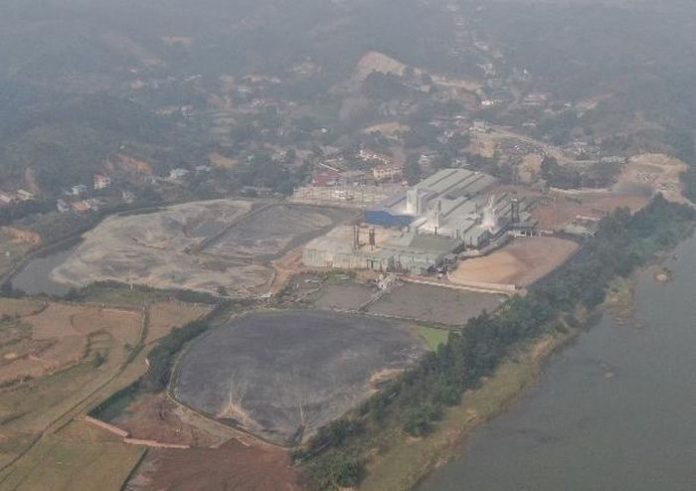
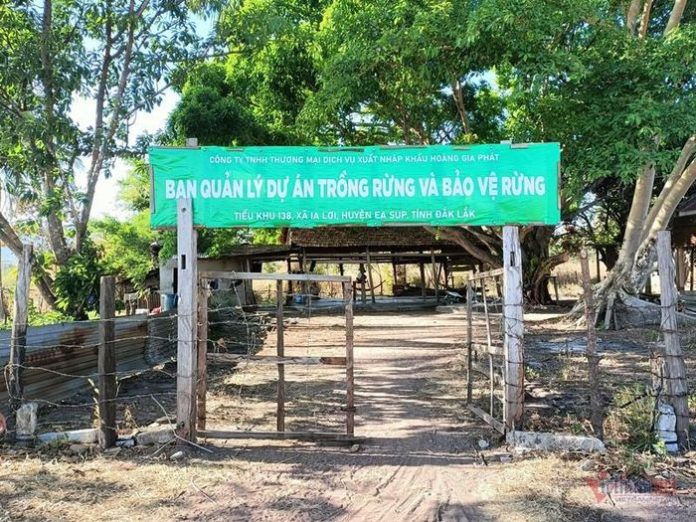
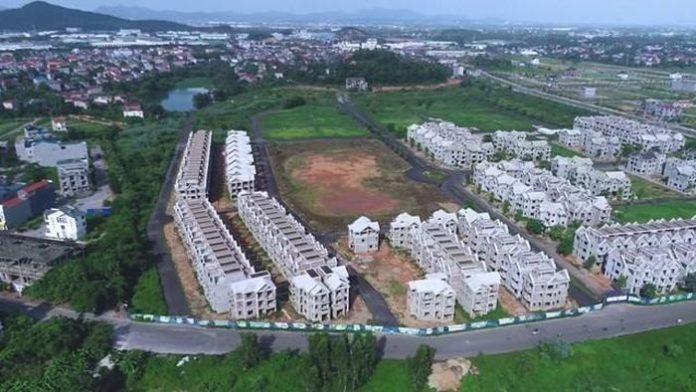
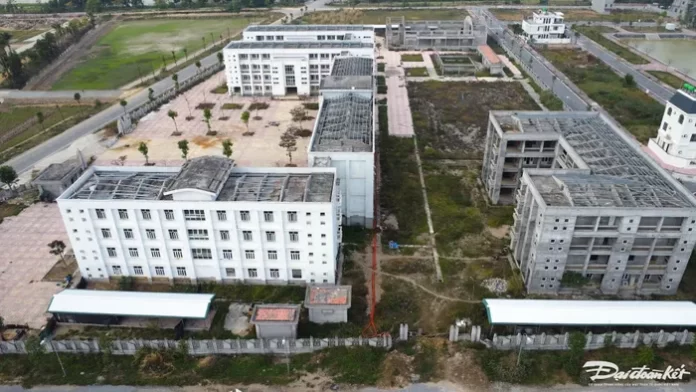


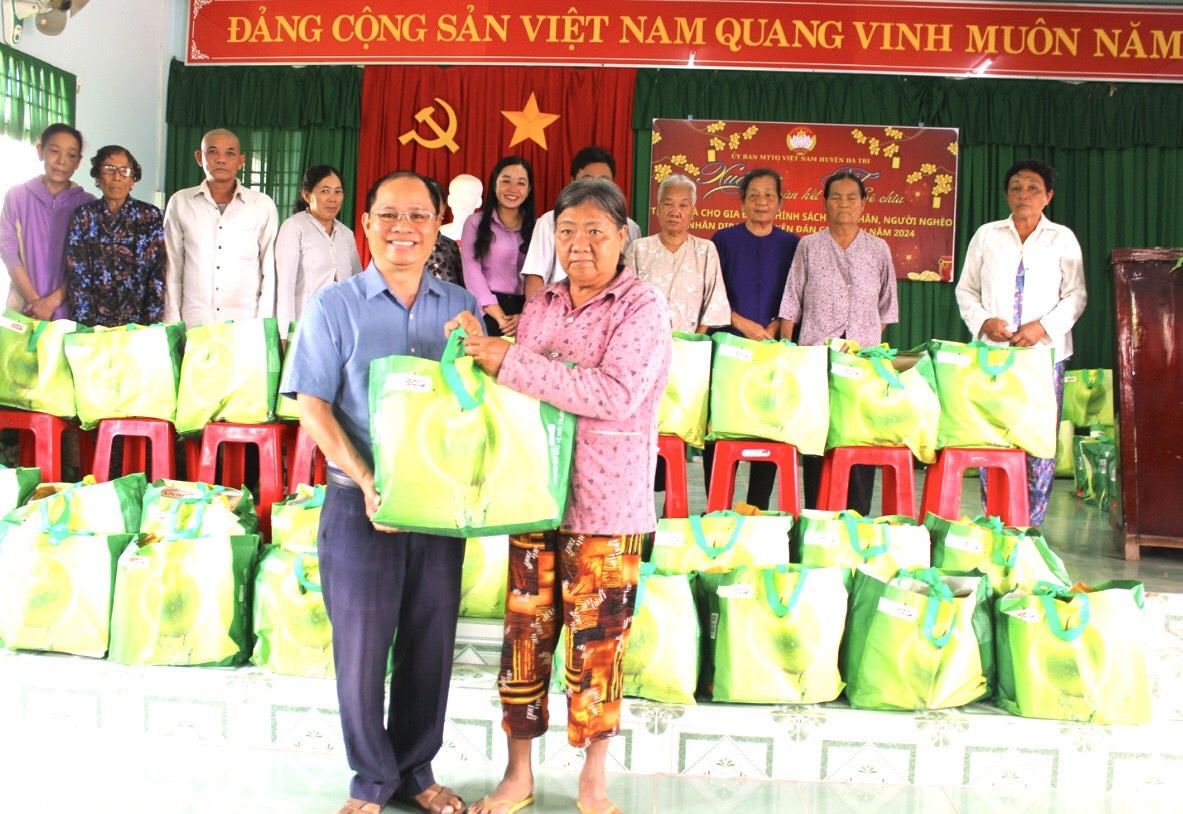
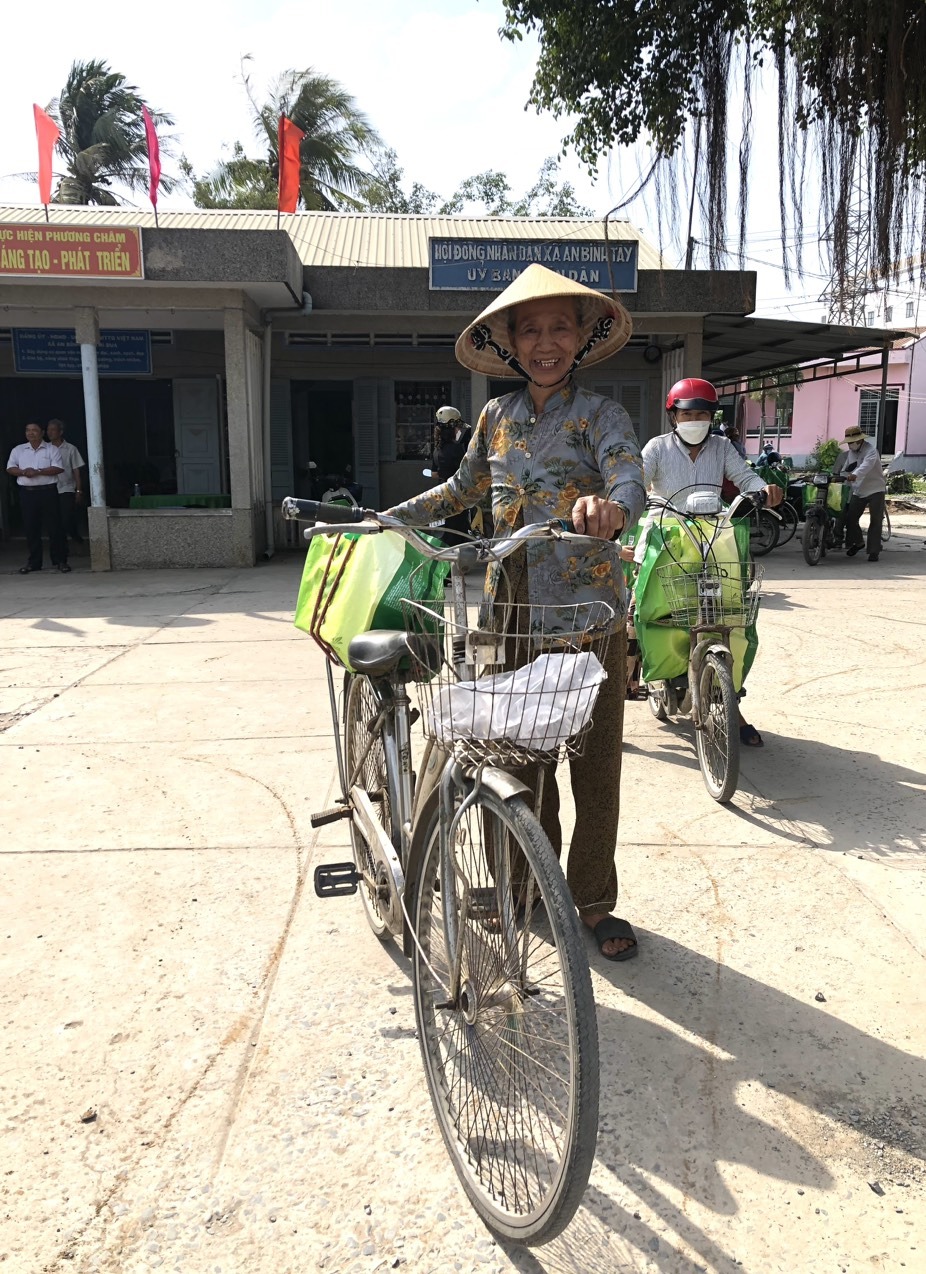
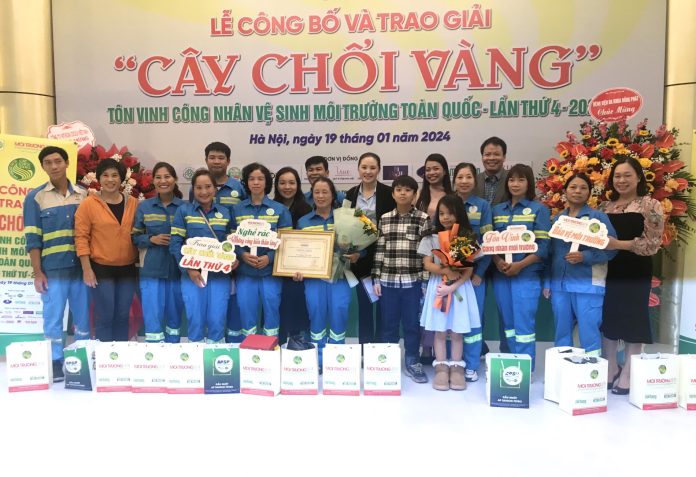
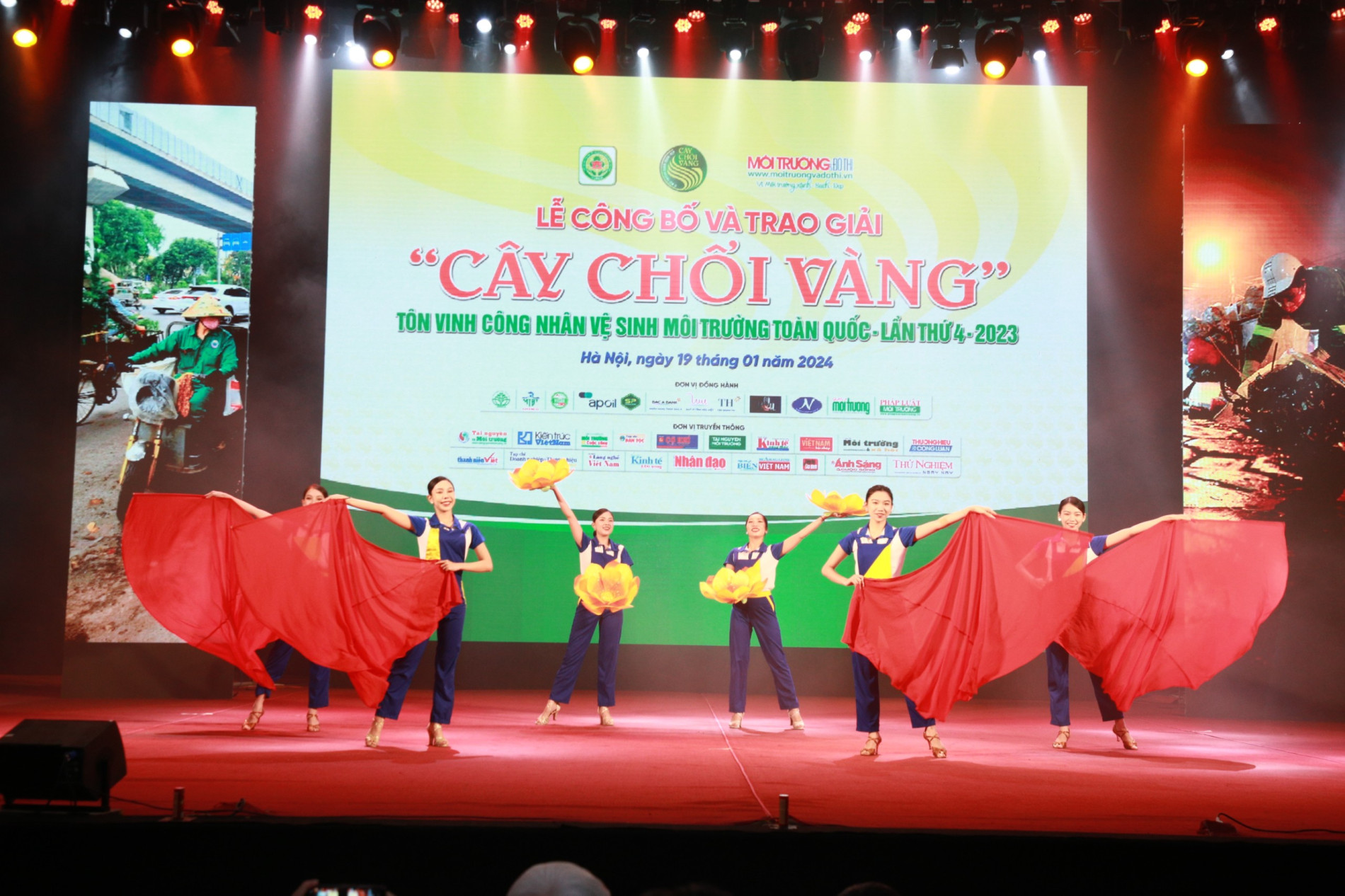 Tiết mục văn nghệ chào mừng buổi lễ công bố
Tiết mục văn nghệ chào mừng buổi lễ công bố Các công nhân vệ sinh môi trường đạt giải Đồng
Các công nhân vệ sinh môi trường đạt giải Đồng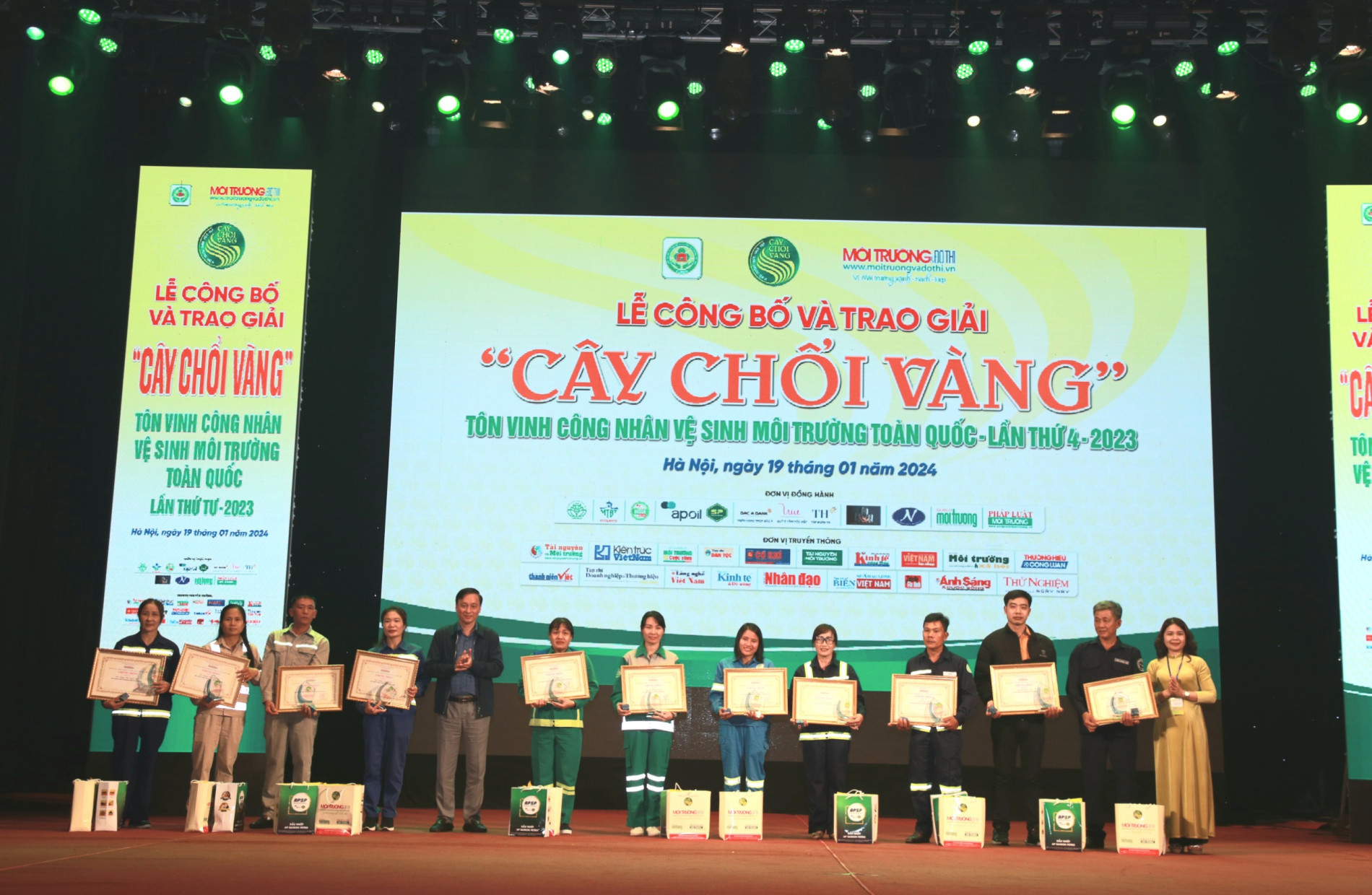 Các công nhân vệ sinh môi trường đạt giải Đồng
Các công nhân vệ sinh môi trường đạt giải Đồng Các công nhân vệ sinh môi trường đạt giải Bạc
Các công nhân vệ sinh môi trường đạt giải Bạc Các công nhân vệ sinh môi trường đạt giải Vàng
Các công nhân vệ sinh môi trường đạt giải Vàng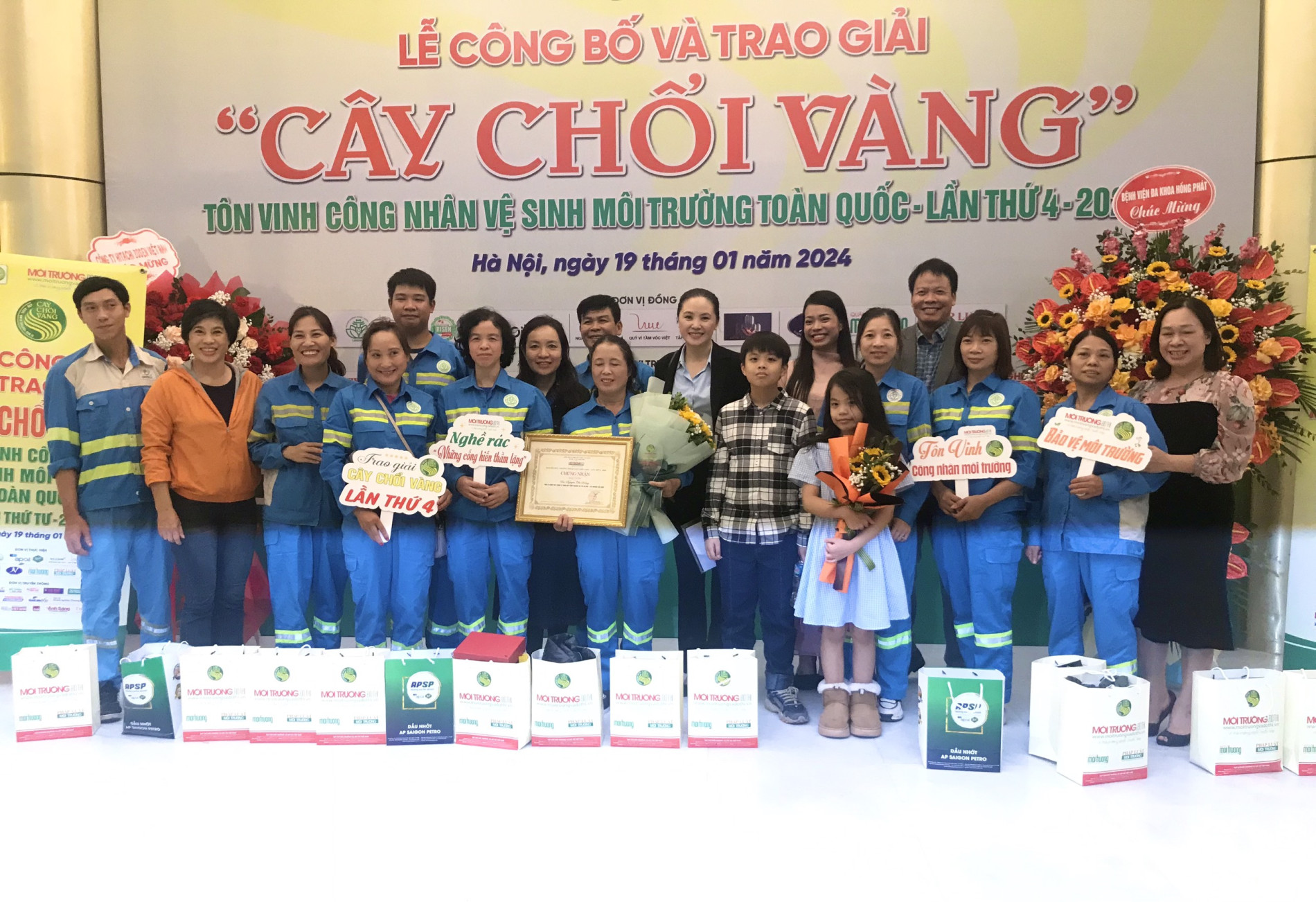 Niềm vui của những công nhân môi trường đạt giải của chương trình
Niềm vui của những công nhân môi trường đạt giải của chương trình TS.LS Đồng Xuân Thụ, Tổng Biên tập Tạp chí Môi trường và Đô thị Việt Nam và lãnh đạo Công ty CP Môi trường đô thị Nghệ An trao tặng đặc cách “Cây chổi vàng” lần thứ 4 cho gia đình chị Hoàng Thị Lan
TS.LS Đồng Xuân Thụ, Tổng Biên tập Tạp chí Môi trường và Đô thị Việt Nam và lãnh đạo Công ty CP Môi trường đô thị Nghệ An trao tặng đặc cách “Cây chổi vàng” lần thứ 4 cho gia đình chị Hoàng Thị Lan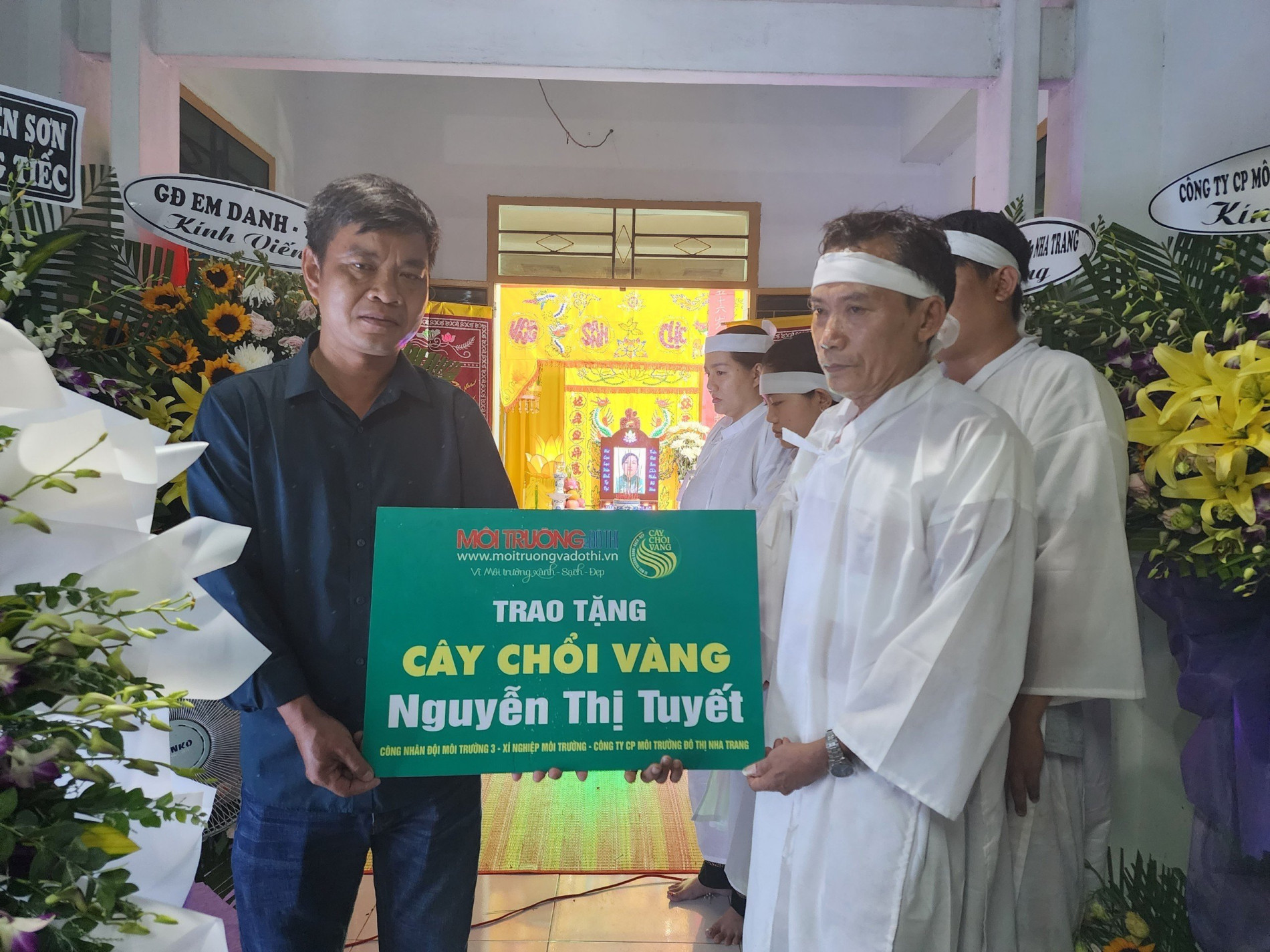 Đại diện Ban tổ chức chương trình “Cây chổi vàng” trao đặc cách “Cây chổi vàng” lần thứ 4 cho chị Nguyễn Thị Tuyết thông qua anh Ngô Kim Tỵ (chồng chị Tuyết)
Đại diện Ban tổ chức chương trình “Cây chổi vàng” trao đặc cách “Cây chổi vàng” lần thứ 4 cho chị Nguyễn Thị Tuyết thông qua anh Ngô Kim Tỵ (chồng chị Tuyết)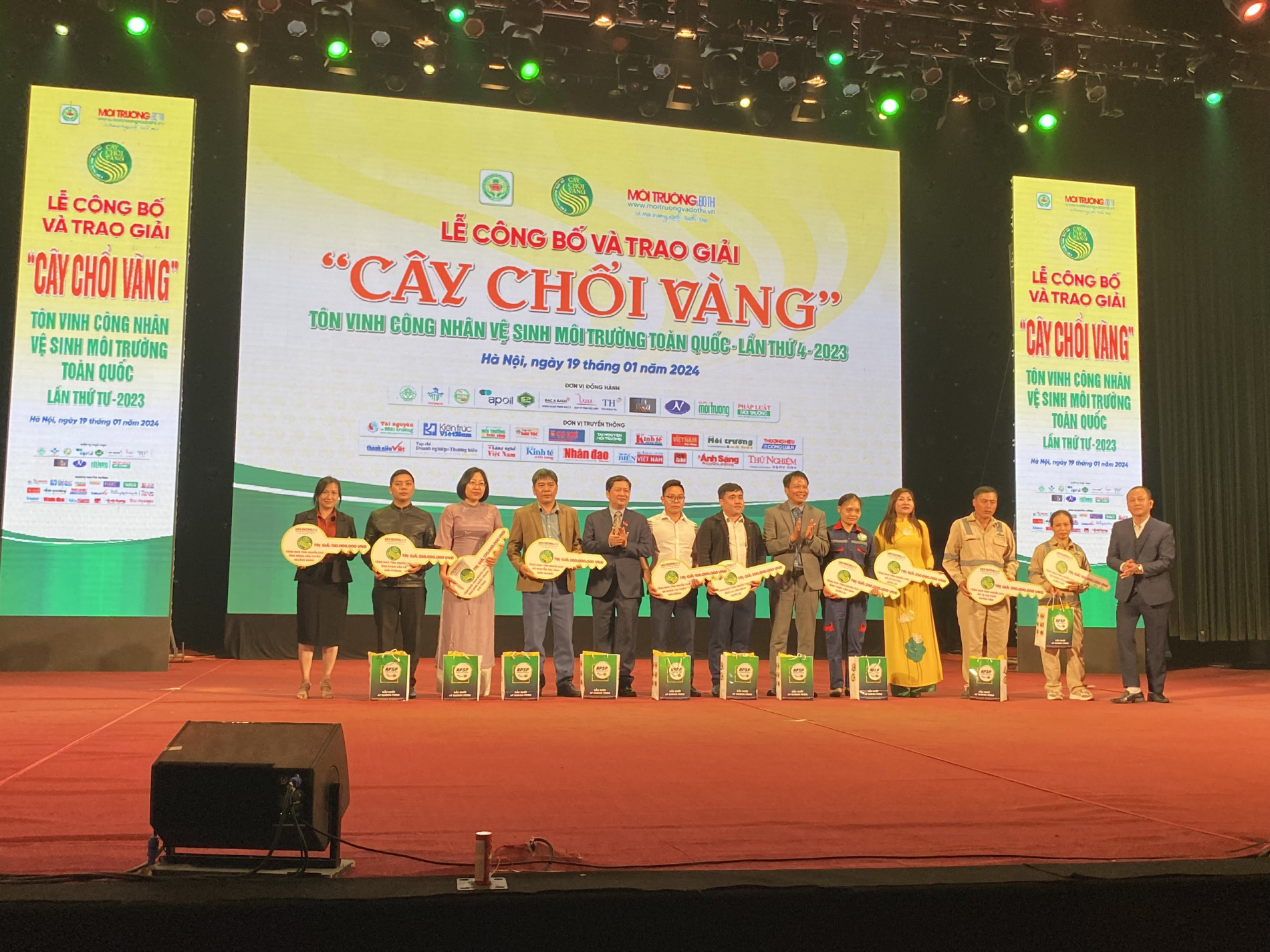 Ban tổ chức đã vận động xây dựng trao tặng 13 căn nhà tình nghĩa cho những công nhân vệ sinh môi trường có hoàn cành khó khăn, mỗi căn nhà có giá trị từ hơn 100 – 550 triệu đồng
Ban tổ chức đã vận động xây dựng trao tặng 13 căn nhà tình nghĩa cho những công nhân vệ sinh môi trường có hoàn cành khó khăn, mỗi căn nhà có giá trị từ hơn 100 – 550 triệu đồng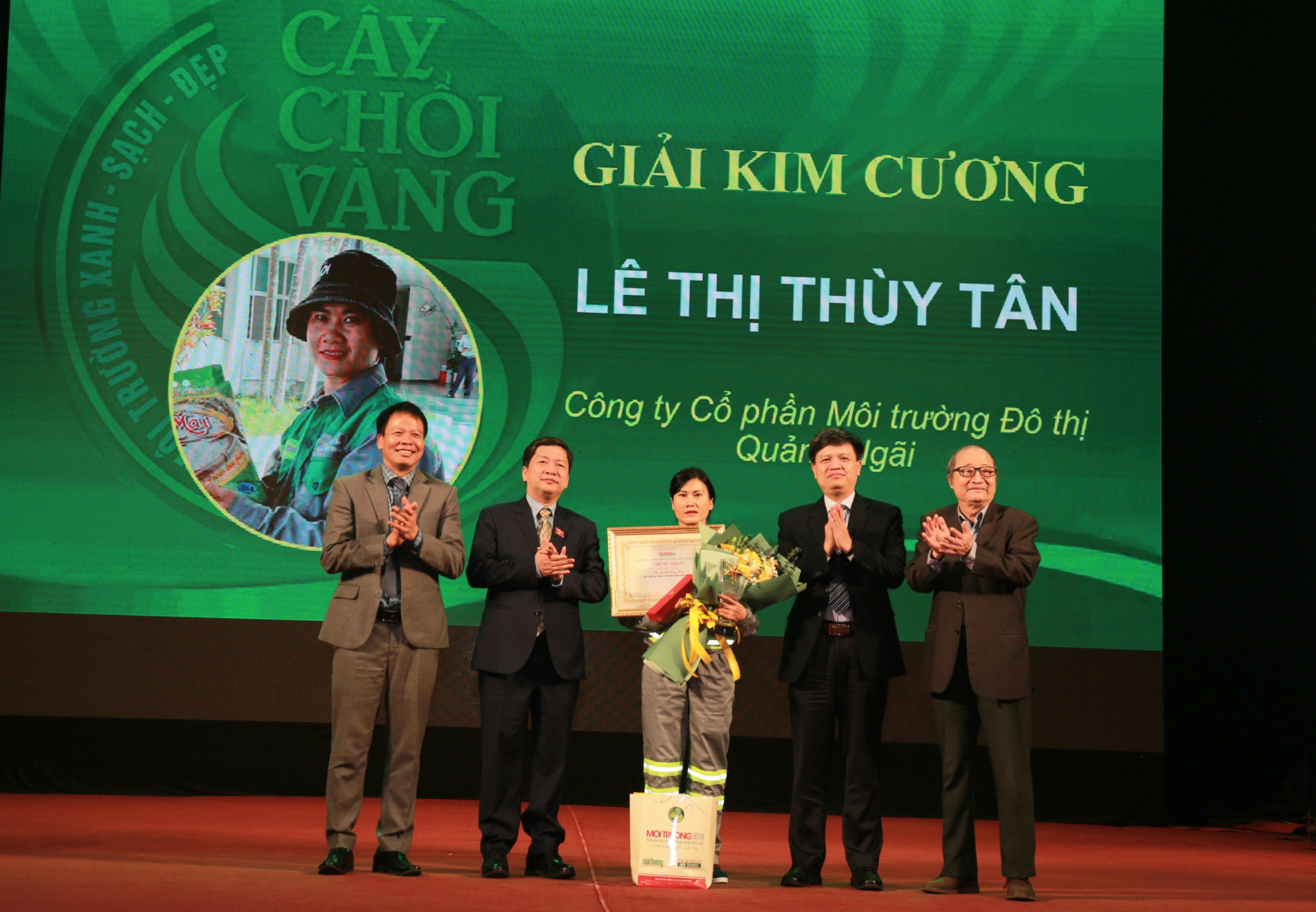 Người đạt giải cao nhất – Chổi Kim cương thuộc về công nhân môi trường Lê Thị Thuỳ Tân, Công ty Cổ phần Môi trường đô thị Quảng Ngãi.
Người đạt giải cao nhất – Chổi Kim cương thuộc về công nhân môi trường Lê Thị Thuỳ Tân, Công ty Cổ phần Môi trường đô thị Quảng Ngãi.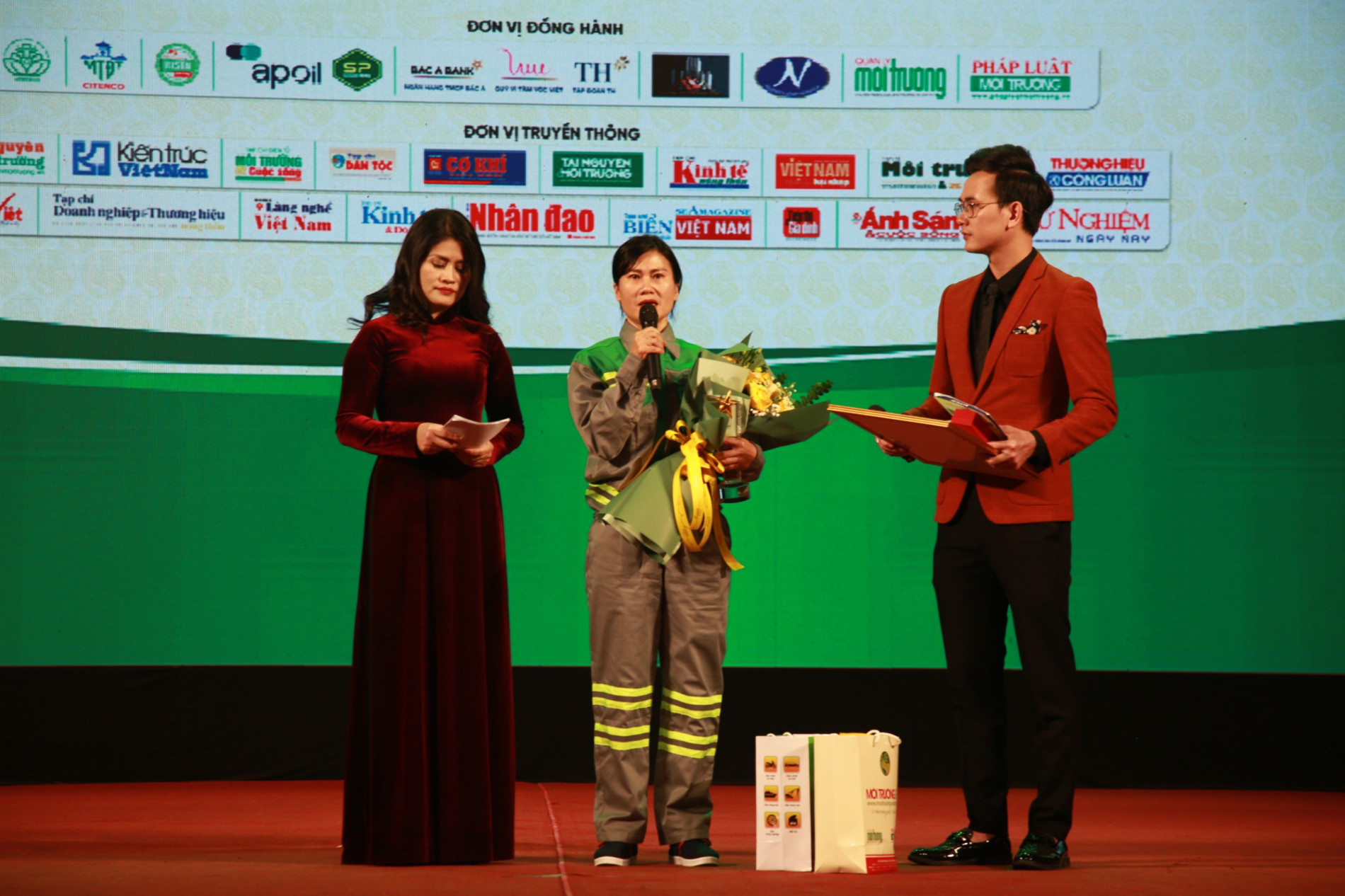 Chổi Kim cương thuộc Lê Thị Thuỳ Tân, Công ty Cổ phần Môi trường đô thị Quảng Ngãi xúc động chia sẻ niềm vui và hạnh phúc khi được đón nhận giải cao nhất của chương trình
Chổi Kim cương thuộc Lê Thị Thuỳ Tân, Công ty Cổ phần Môi trường đô thị Quảng Ngãi xúc động chia sẻ niềm vui và hạnh phúc khi được đón nhận giải cao nhất của chương trình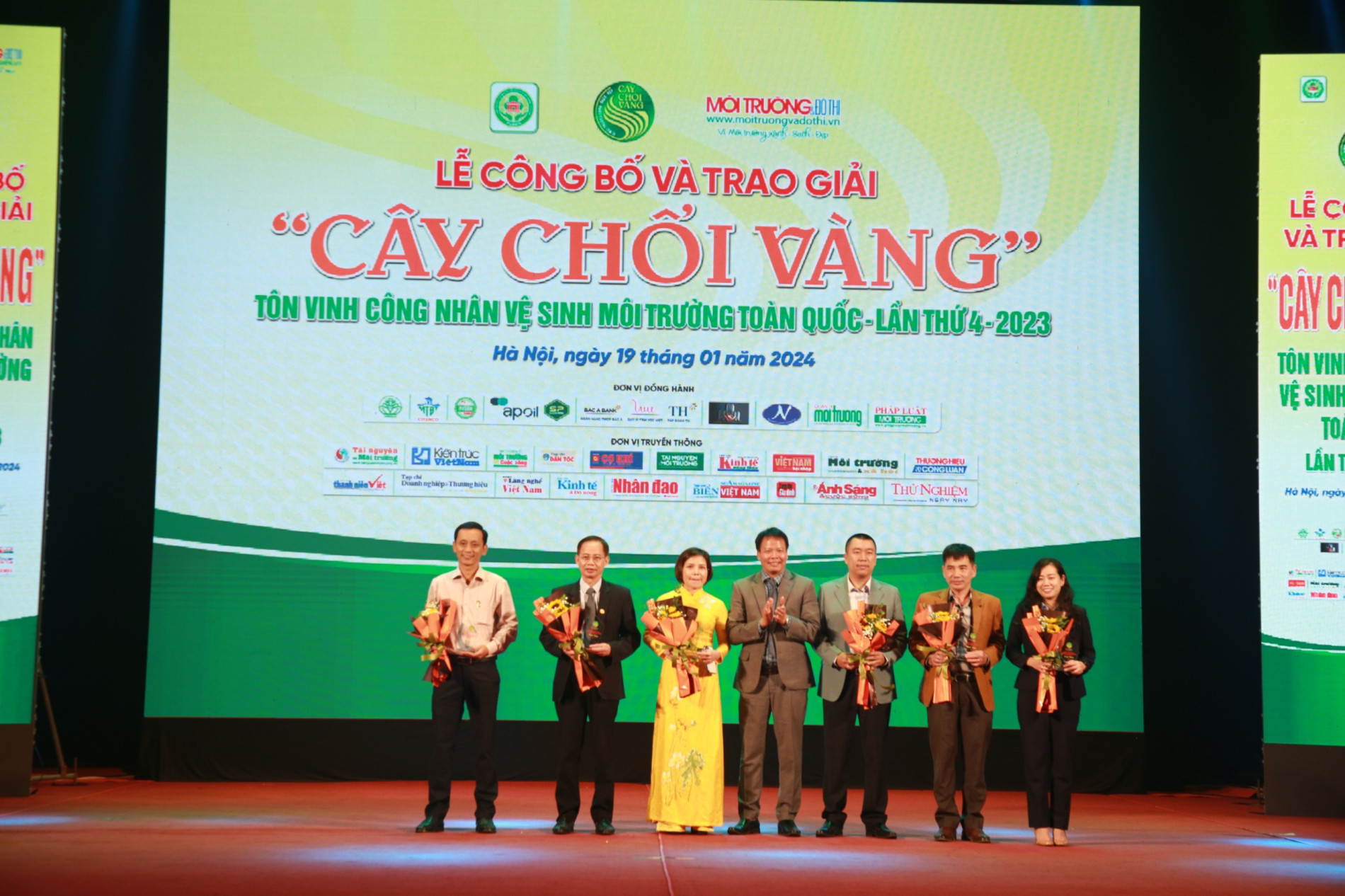 TS.LS Đồng Xuân Thụ, Tổng Biên tập Tạp chí Môi trường và Đô thị Việt Nam, Trưởng Ban tổ chức tặng hoa cảm ơn các nhà tài trợ chương trình
TS.LS Đồng Xuân Thụ, Tổng Biên tập Tạp chí Môi trường và Đô thị Việt Nam, Trưởng Ban tổ chức tặng hoa cảm ơn các nhà tài trợ chương trình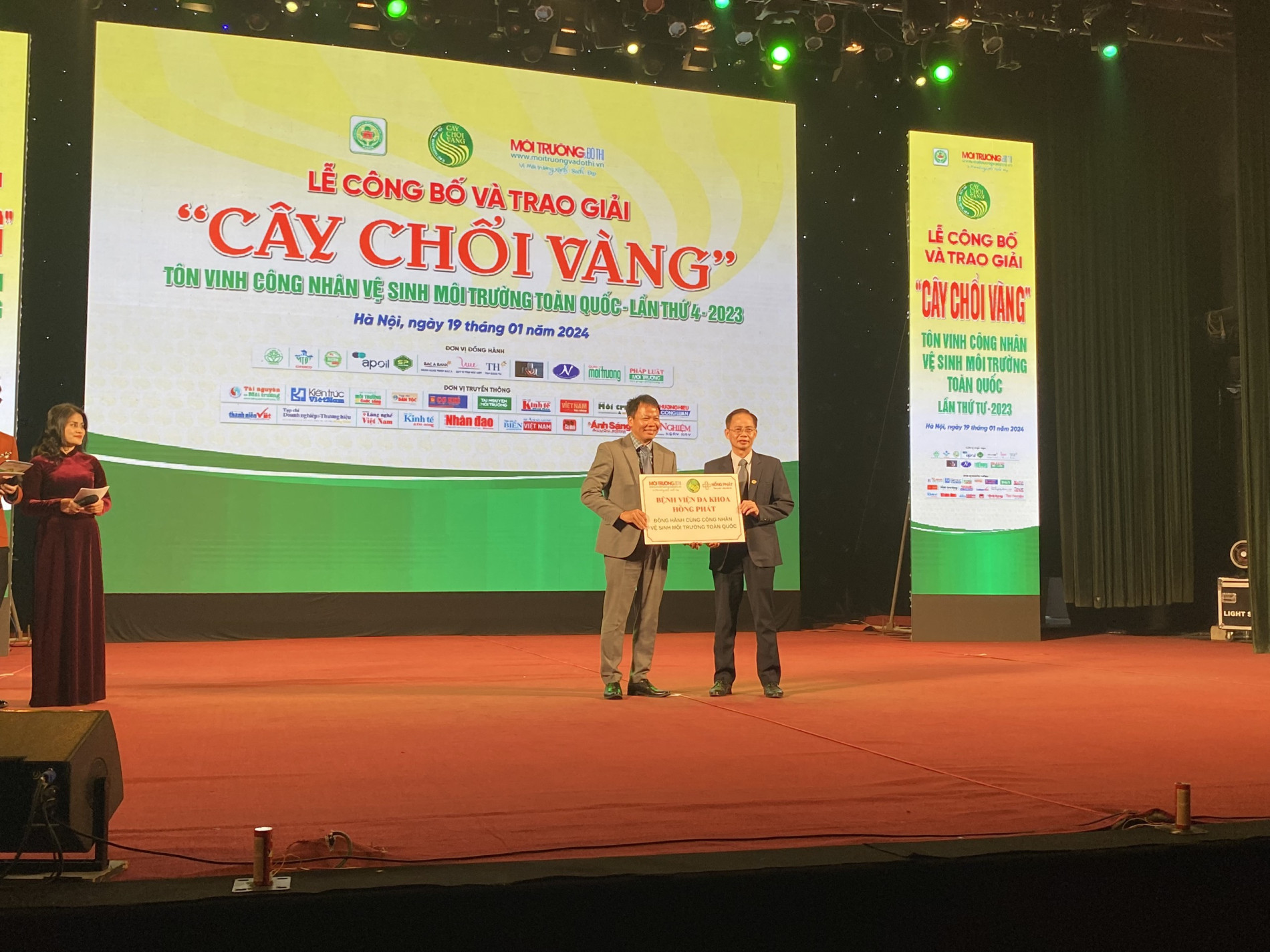 Ông Nguyễn Đức Văn, Giám đốc điều hành Bệnh viện đa khoa Hồng Phát trao tặng cho những công nhân môi trường trên toàn quốc gói khám chữa bệnh trong năm 2024
Ông Nguyễn Đức Văn, Giám đốc điều hành Bệnh viện đa khoa Hồng Phát trao tặng cho những công nhân môi trường trên toàn quốc gói khám chữa bệnh trong năm 2024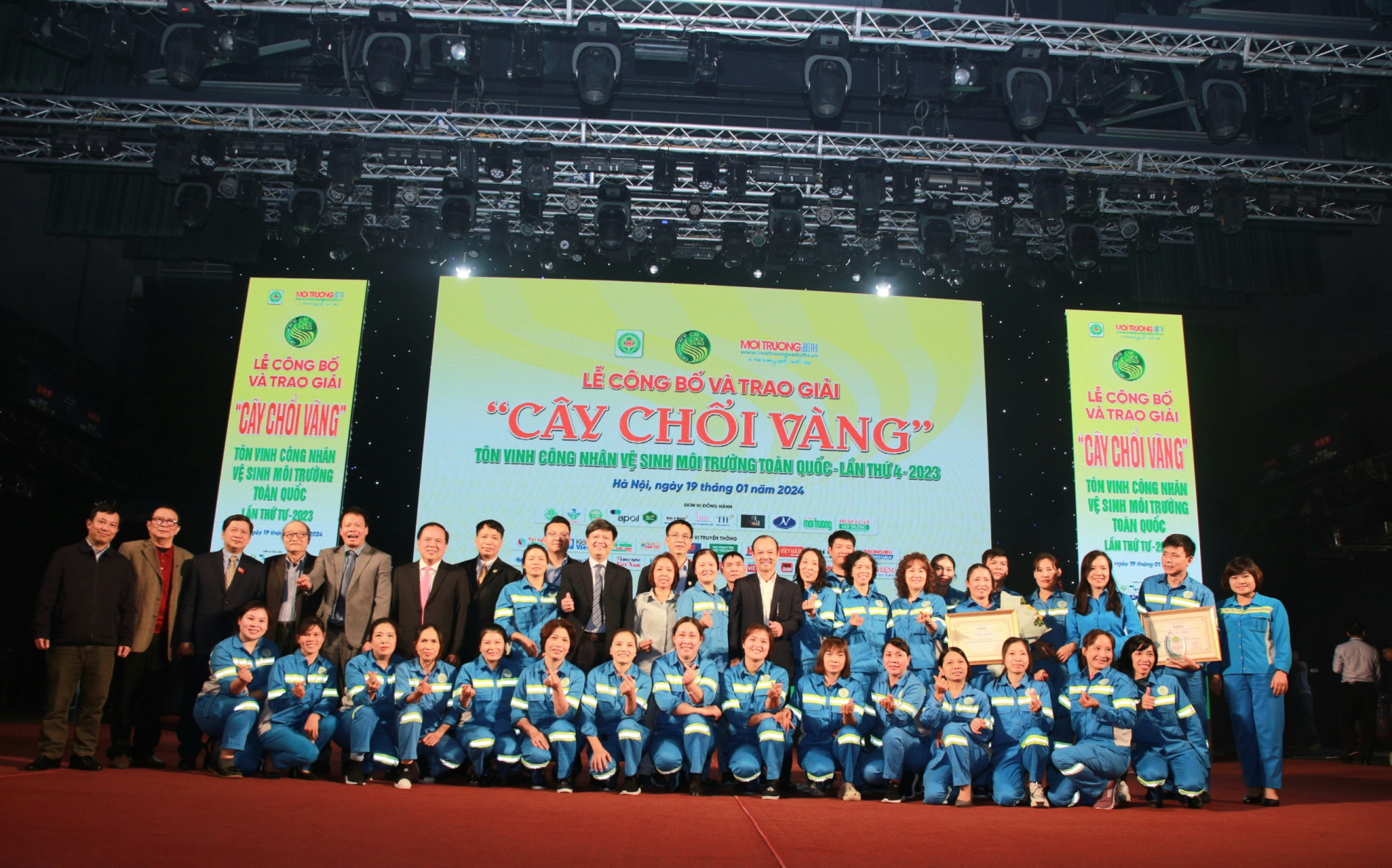 Các đại biểu chụp ảnh cùng với các công nhân môi trường
Các đại biểu chụp ảnh cùng với các công nhân môi trường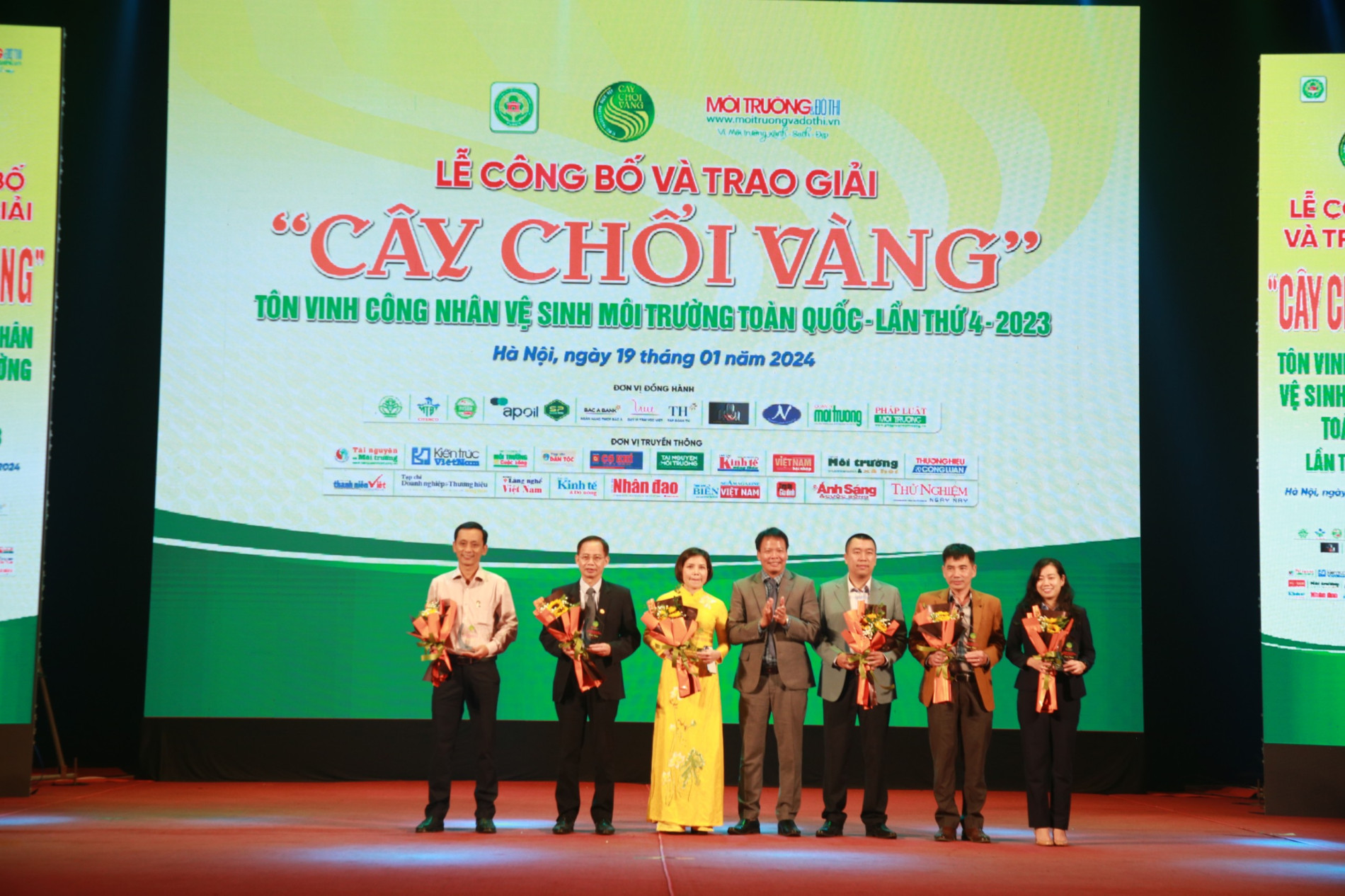
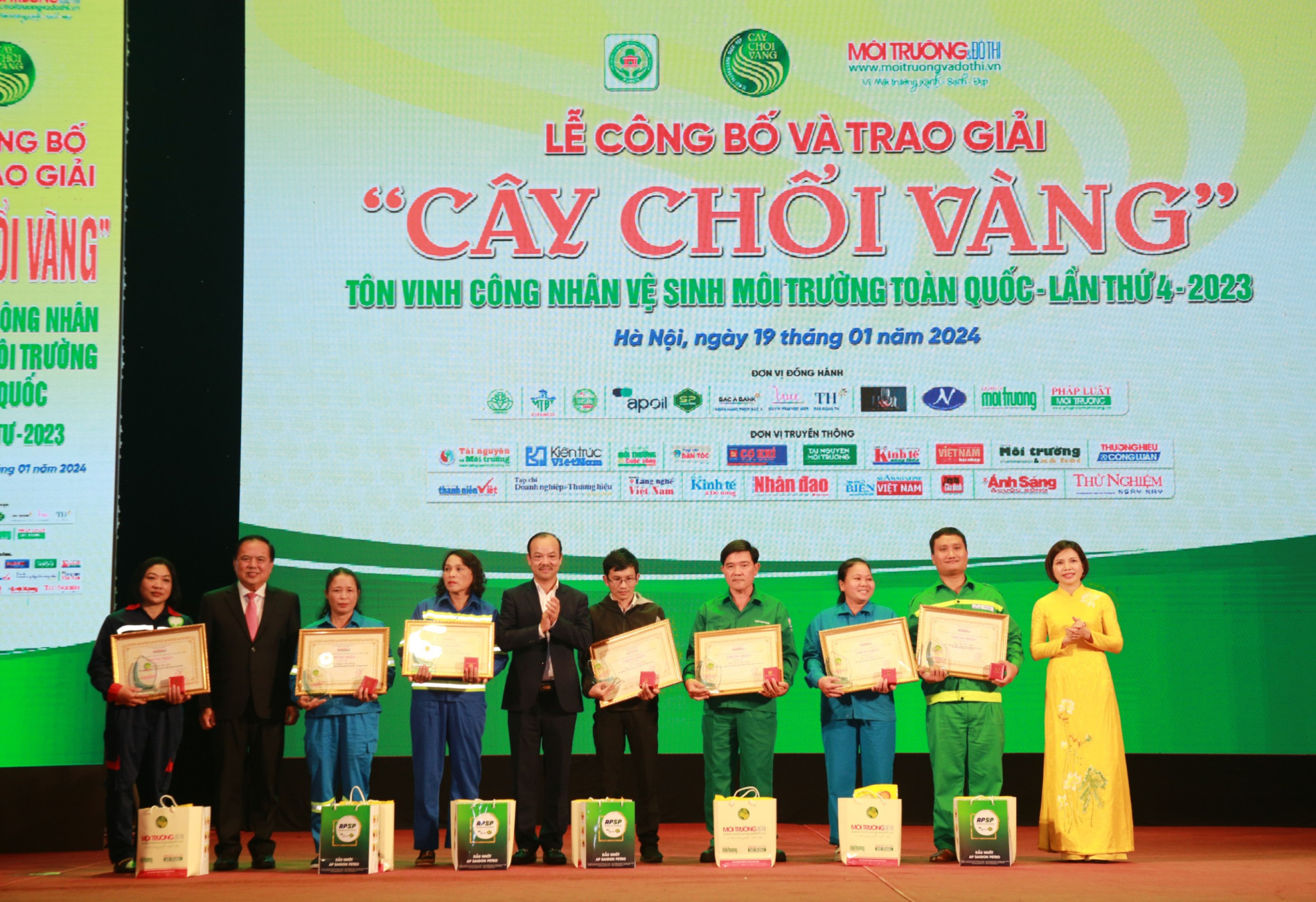
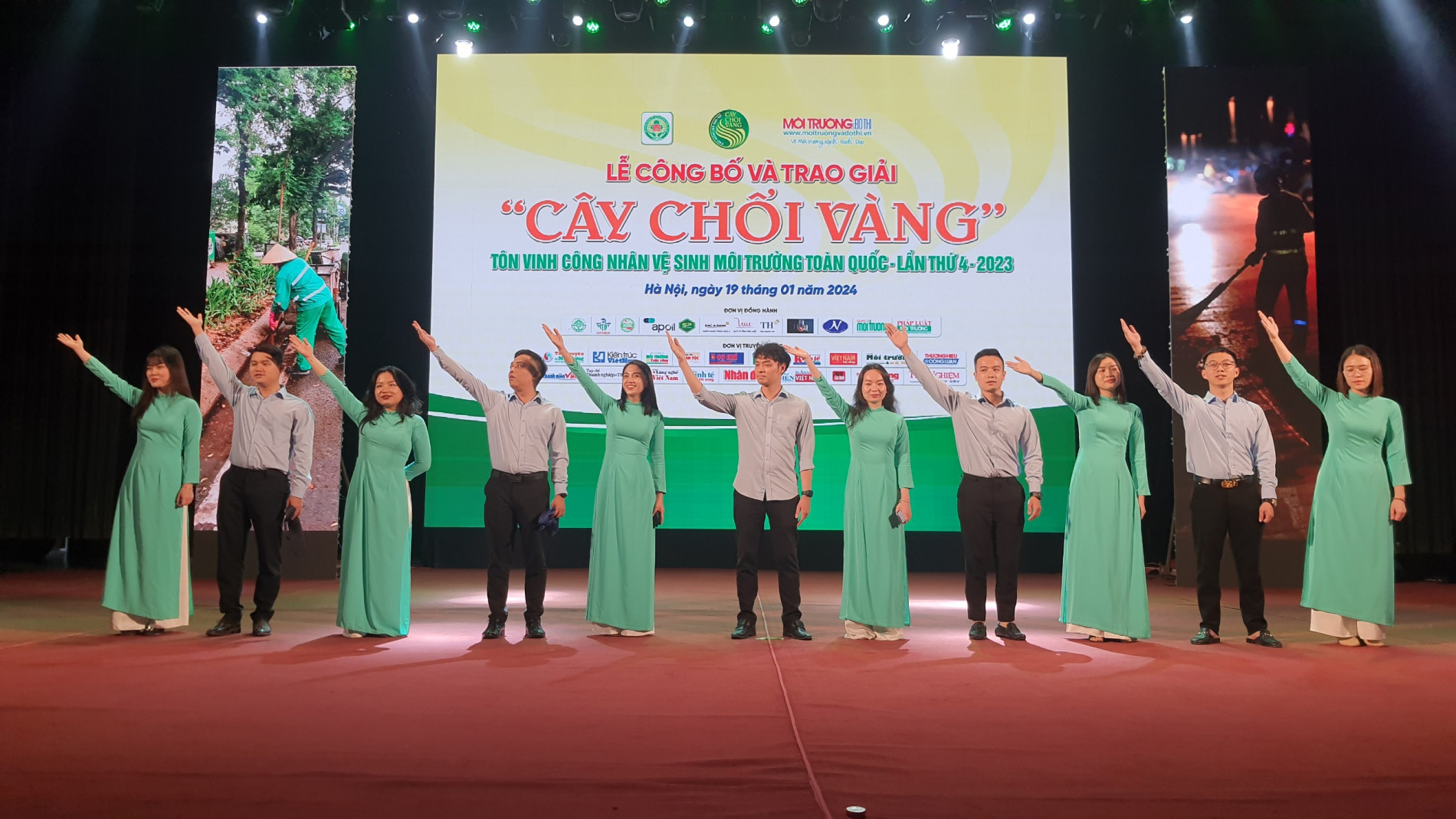


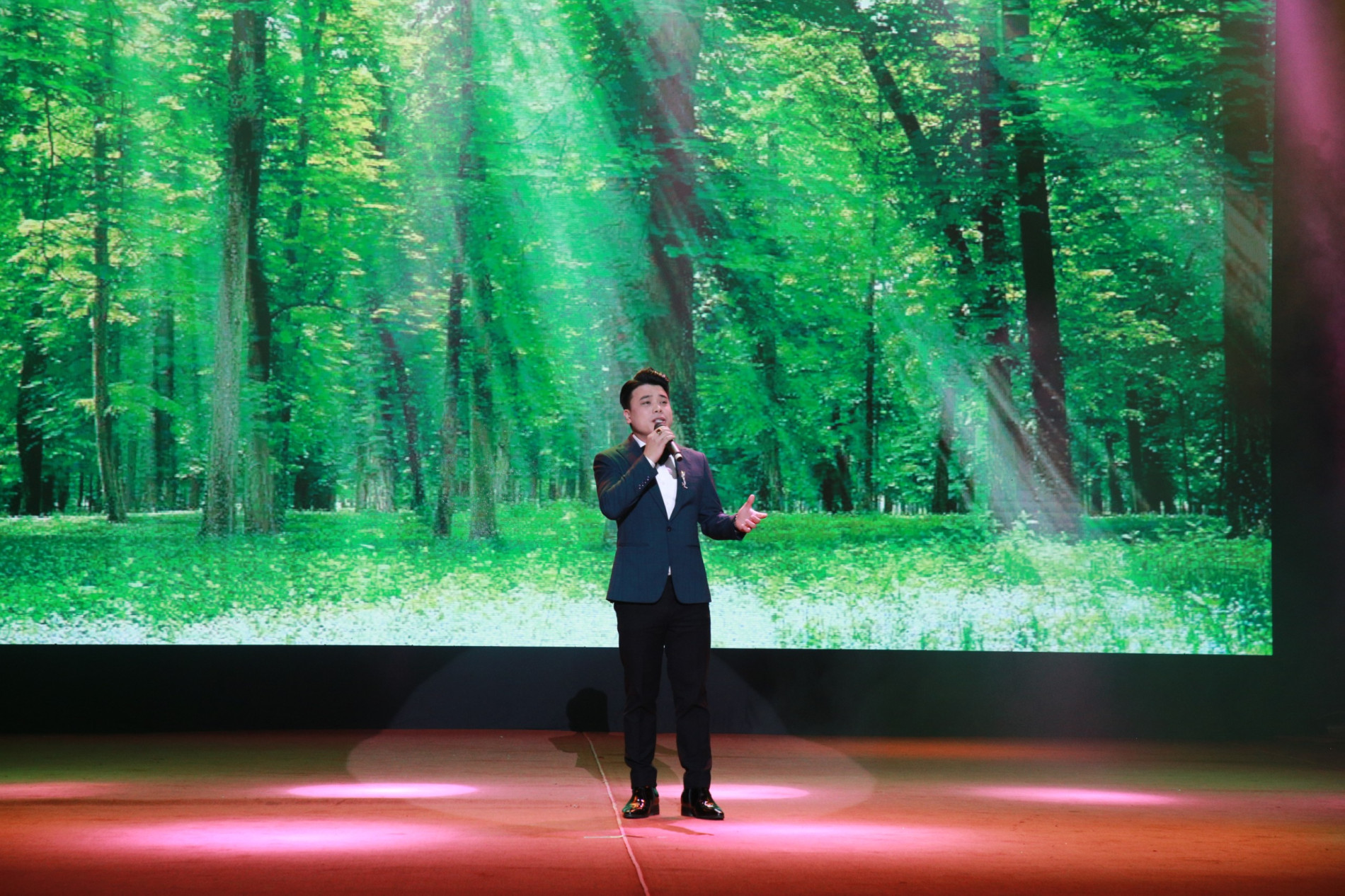
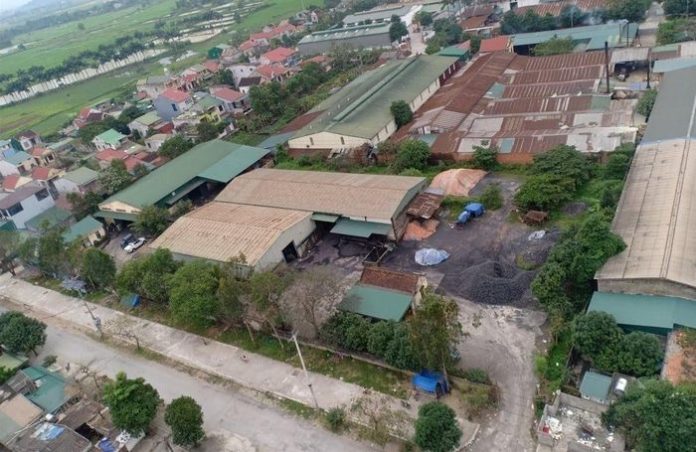

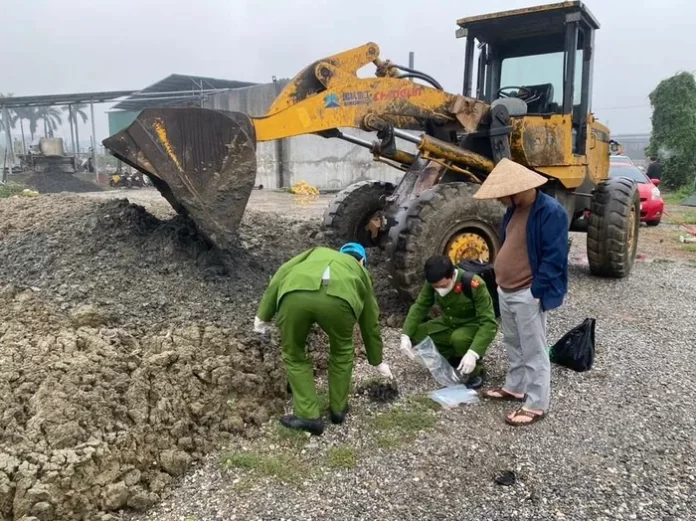

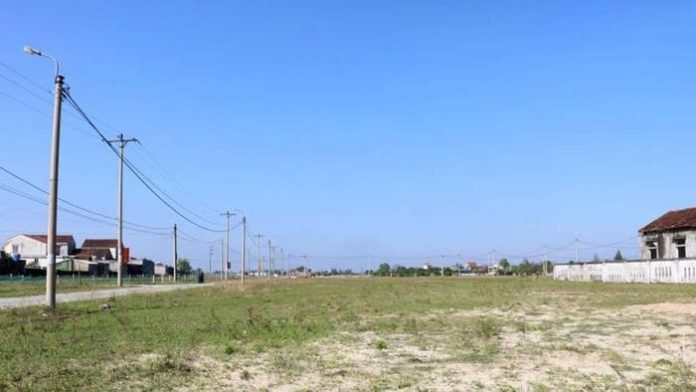

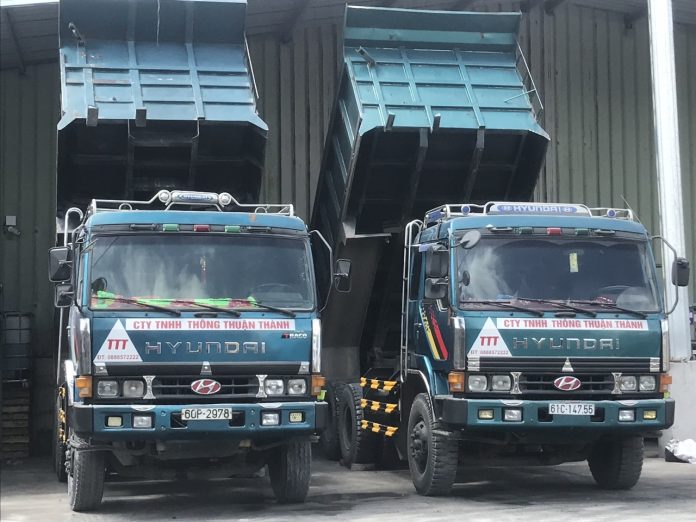
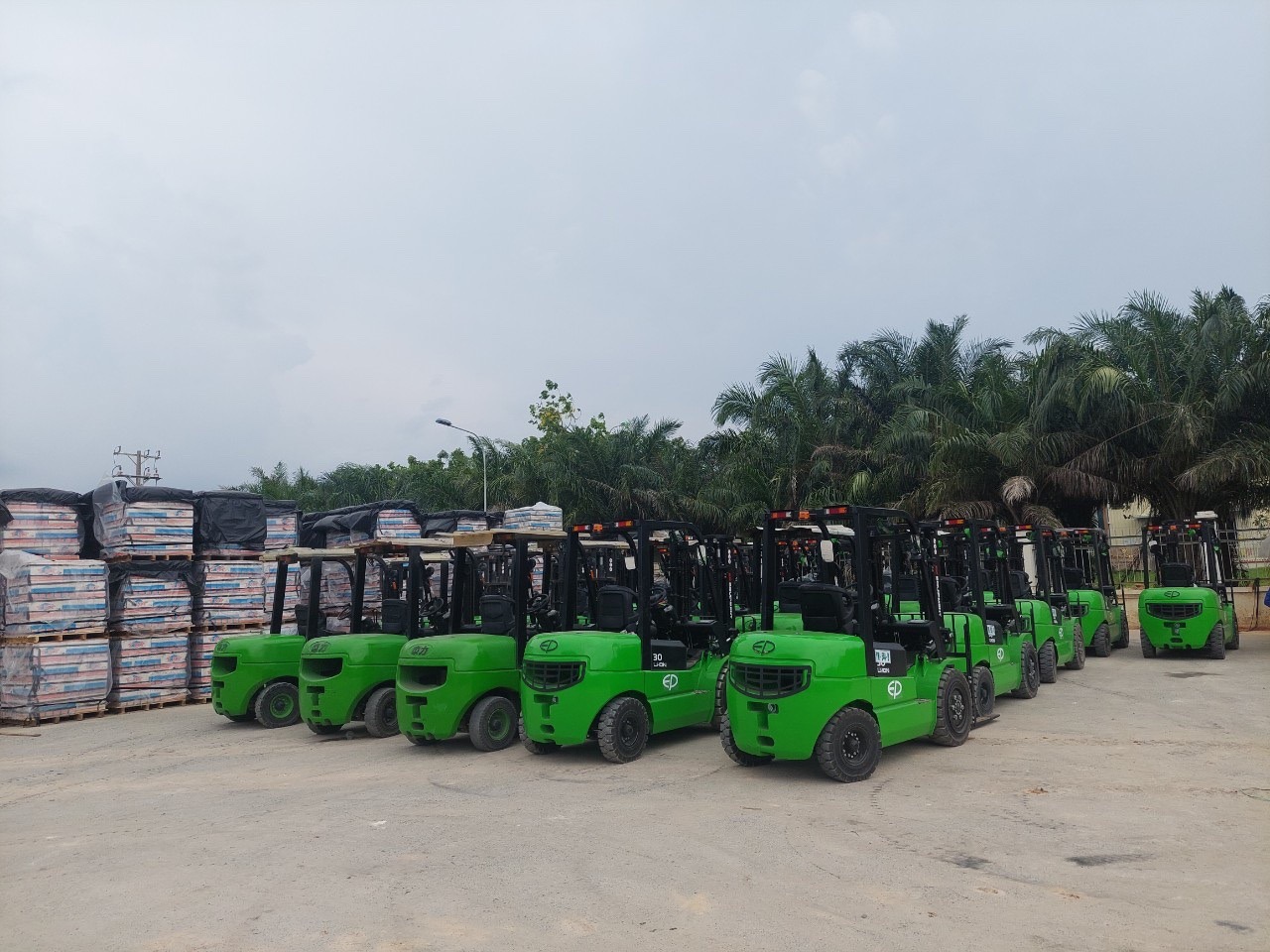 Xe nâng điện bình Lithium sạc nhanh
Xe nâng điện bình Lithium sạc nhanh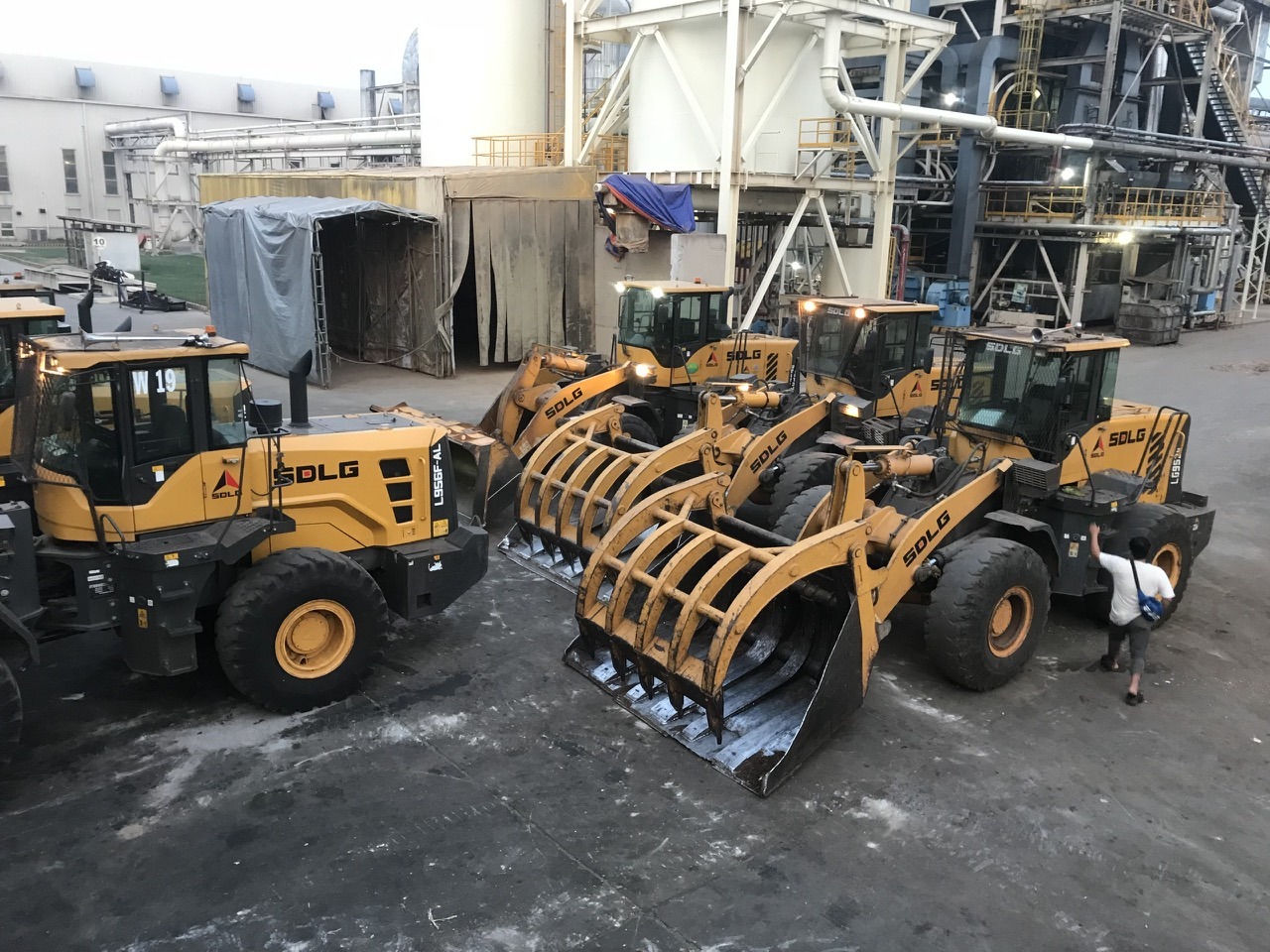 Xe xúc lật, xe kẹp
Xe xúc lật, xe kẹp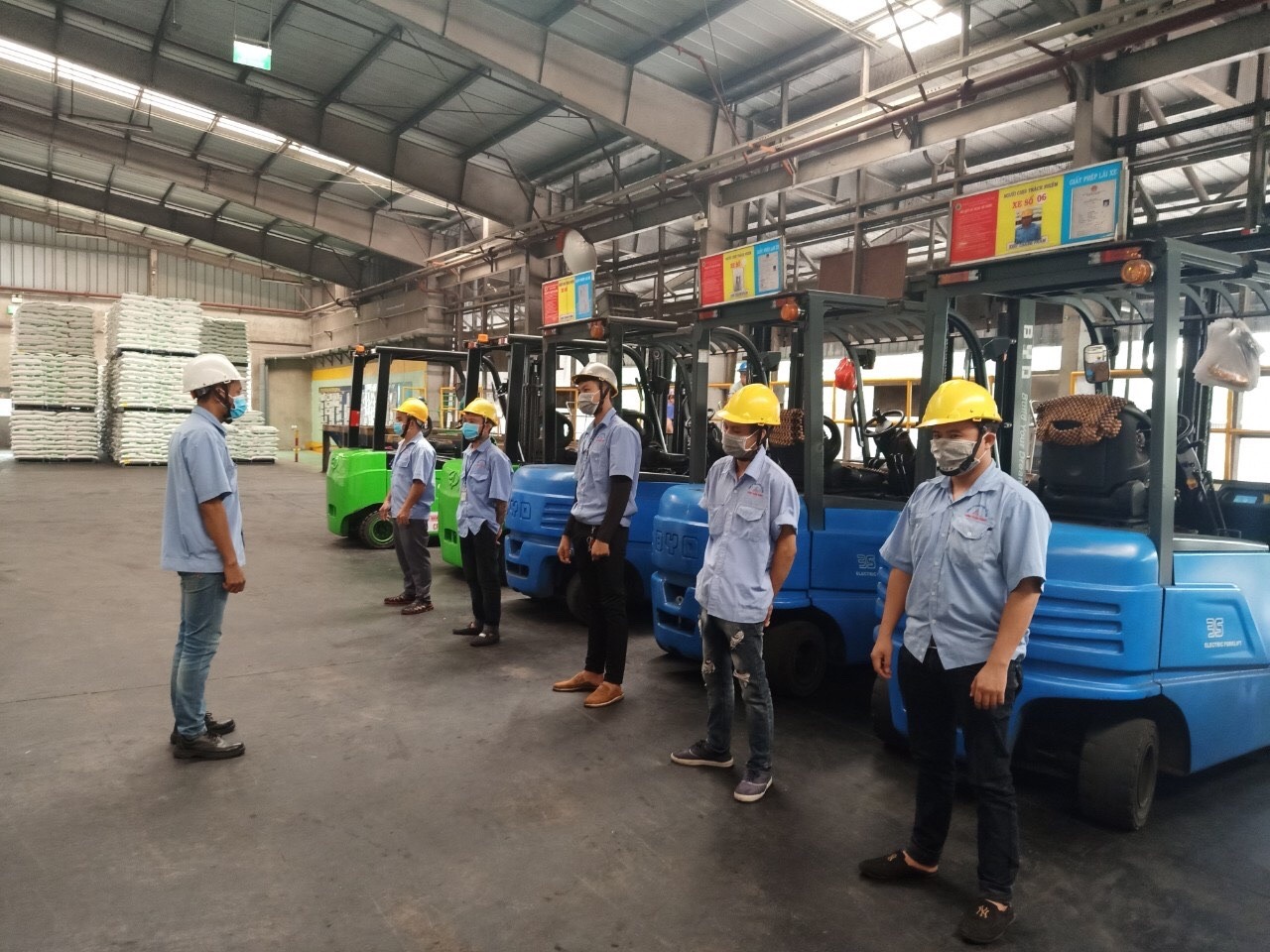 Tập huấn chuyên môn, nghiệp vụ
Tập huấn chuyên môn, nghiệp vụ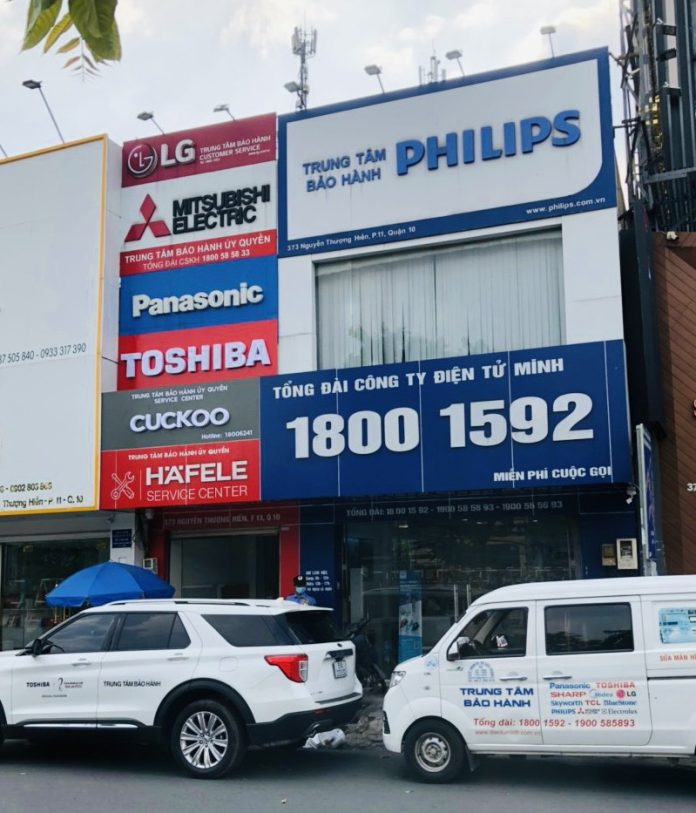

 Đội ngũ kỹ thuật chuyên nghiệp, trình độ cao với nhiều kinh nghiệm
Đội ngũ kỹ thuật chuyên nghiệp, trình độ cao với nhiều kinh nghiệm
 Giám đốc Võ Văn Minh kiểm tra hệ thống Phòng sạch (CleanRoom)
Giám đốc Võ Văn Minh kiểm tra hệ thống Phòng sạch (CleanRoom) 
